Made in Taiwan? How a Frenchman Fooled 18th-Century London
April 18, 2018
Books & History
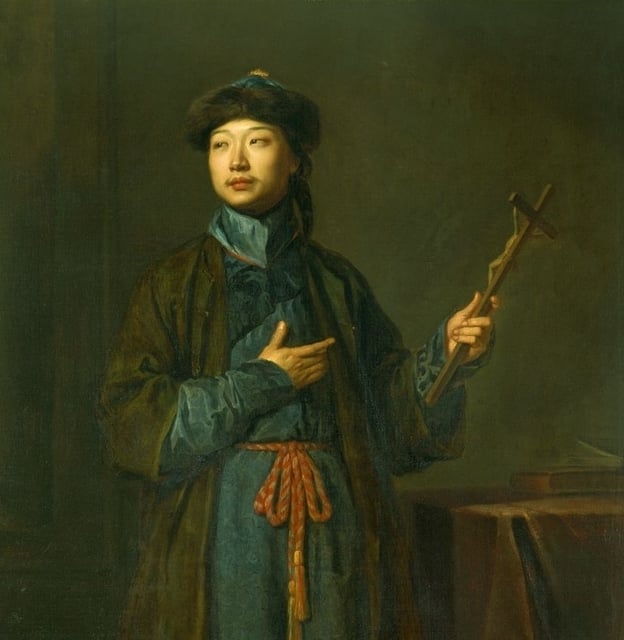 Benjamin Breen on the remarkable story of George Psalmanazar, the mysterious Frenchman who successfully posed as a native of Formosa (now modern Taiwan) and gave birth to a meticulously fabricated culture with bizarre customs, exotic fashions, and its own invented language.
Pens and Needles: Reviving Book-Embroidery in Victorian England
March 21, 2018
Books & Art
Benjamin Breen on the remarkable story of George Psalmanazar, the mysterious Frenchman who successfully posed as a native of Formosa (now modern Taiwan) and gave birth to a meticulously fabricated culture with bizarre customs, exotic fashions, and its own invented language.
Pens and Needles: Reviving Book-Embroidery in Victorian England
March 21, 2018
Books & Art
 Fashionable in the 16th and 17th century, the art of embroidering unique covers for books saw a comeback in late 19th-century England, from the middle-class drawing room to the Arts and Crafts movement. Jessica Roberson explores the bibliomania, patriotism, and issues around gender so central to the revival.
Defining the Demonic
October 25, 2017
Books & Art & Religion
Fashionable in the 16th and 17th century, the art of embroidering unique covers for books saw a comeback in late 19th-century England, from the middle-class drawing room to the Arts and Crafts movement. Jessica Roberson explores the bibliomania, patriotism, and issues around gender so central to the revival.
Defining the Demonic
October 25, 2017
Books & Art & Religion
 Although Jacques Collin de Plancy’s Dictionnaire infernal, a monumental compendium of all things diabolical, was first published in 1818 to much success, it is the fabulously illustrated final edition of 1863 which secured the book as a landmark in the study and representation of demons. Ed Simon explores the work and how at its heart lies an unlikely but pertinent synthesis of the Enlightenment and the occult.
Master of Disaster, Ignatius Donnelly
September 27, 2017
Books & Literature & Science & Religion
Although Jacques Collin de Plancy’s Dictionnaire infernal, a monumental compendium of all things diabolical, was first published in 1818 to much success, it is the fabulously illustrated final edition of 1863 which secured the book as a landmark in the study and representation of demons. Ed Simon explores the work and how at its heart lies an unlikely but pertinent synthesis of the Enlightenment and the occult.
Master of Disaster, Ignatius Donnelly
September 27, 2017
Books & Literature & Science & Religion
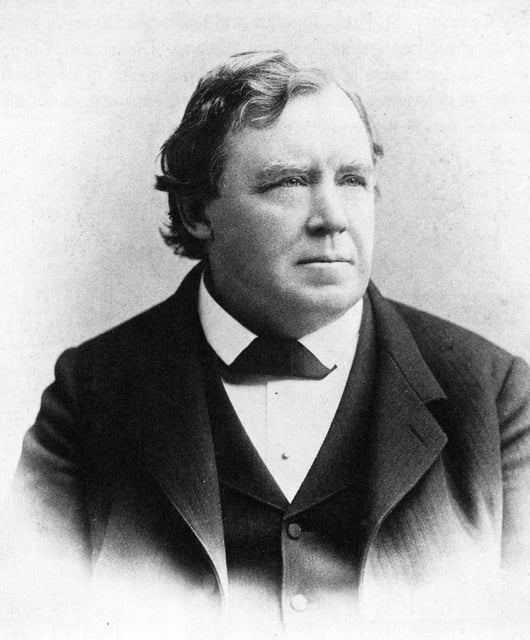 The destruction of Atlantis, cataclysmic comets, and a Manhattan tower made entirely from concrete and corpse — Carl Abbott on the life and work of a Minnesotan writer, and failed politician, with a mind primed for catastrophe.
Rescuing England: The Rhetoric of Imperialism and the Salvation Army
August 16, 2017
Books & Religion
The destruction of Atlantis, cataclysmic comets, and a Manhattan tower made entirely from concrete and corpse — Carl Abbott on the life and work of a Minnesotan writer, and failed politician, with a mind primed for catastrophe.
Rescuing England: The Rhetoric of Imperialism and the Salvation Army
August 16, 2017
Books & Religion
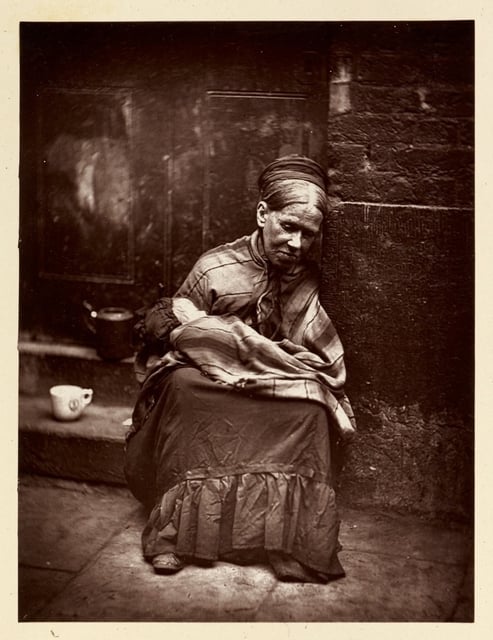 Ellen J. Stockstill on how William Booth, founder of the Salvation Army, placed the ideas and language of colonialism at the very heart of his vision for improving the lives of Victorian England’s poor.
Woodcuts and Witches
May 4, 2017
Books & Art & History & Religion
Ellen J. Stockstill on how William Booth, founder of the Salvation Army, placed the ideas and language of colonialism at the very heart of his vision for improving the lives of Victorian England’s poor.
Woodcuts and Witches
May 4, 2017
Books & Art & History & Religion
 Jon Crabb on the witch-craze of Early Modern Europe, and how the concurrent rise of the mass-produced woodcut helped forge the archetype of the broom-riding crone — complete with cauldron and cats — so familiar today.
George Washington: A Descendant of Odin?
February 8, 2017
Books & History & Religion
Jon Crabb on the witch-craze of Early Modern Europe, and how the concurrent rise of the mass-produced woodcut helped forge the archetype of the broom-riding crone — complete with cauldron and cats — so familiar today.
George Washington: A Descendant of Odin?
February 8, 2017
Books & History & Religion
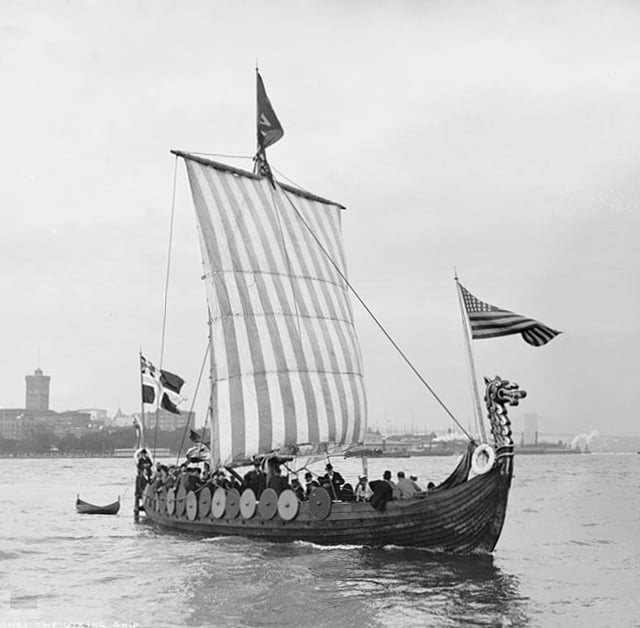 Yvonne Seale on a bizarre and fanciful piece of genealogical scholarship and what it tells us about identity in late 19th-century America.
Defoe and the Distance to Utopia
January 25, 2017
Books & Literature
Yvonne Seale on a bizarre and fanciful piece of genealogical scholarship and what it tells us about identity in late 19th-century America.
Defoe and the Distance to Utopia
January 25, 2017
Books & Literature
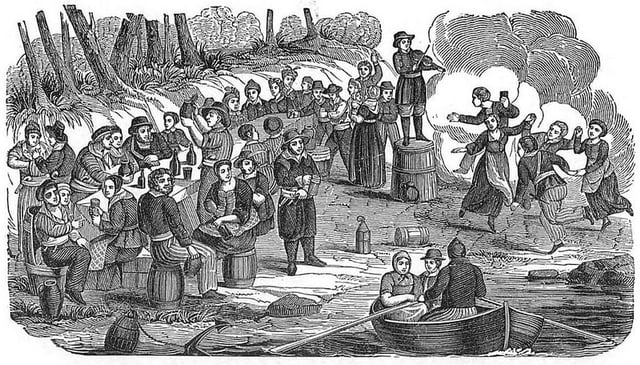 In the wake of recent political shifts and the dystopian flavour they carry for many, J.H. Pearl looks to the works of Daniel Defoe and the lessons they can teach us about bringing utopia home.
Astral Travels with Jack London
November 22, 2016
Books & Literature
In the wake of recent political shifts and the dystopian flavour they carry for many, J.H. Pearl looks to the works of Daniel Defoe and the lessons they can teach us about bringing utopia home.
Astral Travels with Jack London
November 22, 2016
Books & Literature
 On the centenary of Jack London’s death, Benjamin Breen looks at the writer’s last book to be published in his lifetime, The Star Rover — a strange tale about solitary confinement and interstellar reincarnation, which speaks to us of the dreams and struggles of the man himself.
Richard Hakluyt and Early English Travel
October 26, 2016
Books & History
On the centenary of Jack London’s death, Benjamin Breen looks at the writer’s last book to be published in his lifetime, The Star Rover — a strange tale about solitary confinement and interstellar reincarnation, which speaks to us of the dreams and struggles of the man himself.
Richard Hakluyt and Early English Travel
October 26, 2016
Books & History
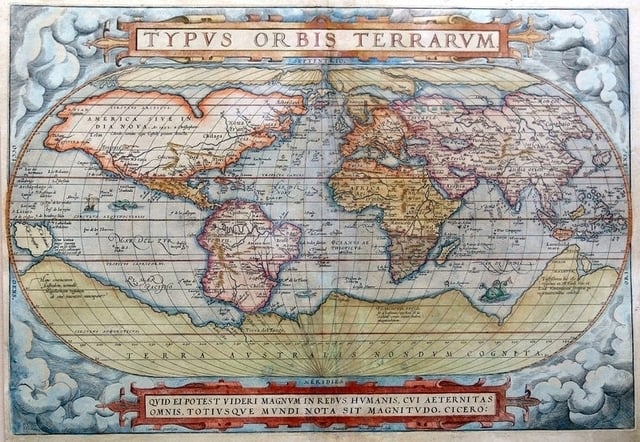 The Principle Navigations, Richard Hakluyt’s great championing of Elizabethan colonial exploration, remains one of the most important collections of English travel writing ever published. As well as the escapades of famed names such as Francis Drake and Walter Raleigh, Nandini Das looks at how the book preserves many stories of lesser known figures that surely would have been otherwise lost.
Picturing Don Quixote
April 6, 2016
Books & Literature & Art
The Principle Navigations, Richard Hakluyt’s great championing of Elizabethan colonial exploration, remains one of the most important collections of English travel writing ever published. As well as the escapades of famed names such as Francis Drake and Walter Raleigh, Nandini Das looks at how the book preserves many stories of lesser known figures that surely would have been otherwise lost.
Picturing Don Quixote
April 6, 2016
Books & Literature & Art
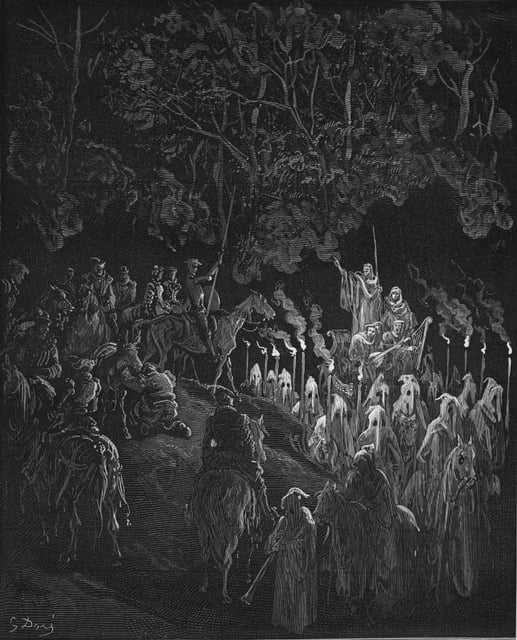 This year marks the 400th anniversary of the death of Miguel de Cervantes, author of one of the best-loved and most frequently illustrated books in the history of literature — Don Quixote. Rachel Schmidt explores how the varying approaches to illustrating the tale have reflected and impacted its reading through the centuries.
Divine Comedy: Lucian Versus The Gods
March 23, 2016
Books & Religion
This year marks the 400th anniversary of the death of Miguel de Cervantes, author of one of the best-loved and most frequently illustrated books in the history of literature — Don Quixote. Rachel Schmidt explores how the varying approaches to illustrating the tale have reflected and impacted its reading through the centuries.
Divine Comedy: Lucian Versus The Gods
March 23, 2016
Books & Religion
 With the twenty-six short comic dialogues that made up Dialogues of the Gods, the 2nd-century writer Lucian of Samosata took the popular images of the Greek gods and redrew them as greedy, sex-obsessed, power-mad despots. Nicholas Jeeves, editor of a new edition for PDR Press, explores the story behind the work and its reception in the English-speaking world.
Robert Greene, the First Bohemian
January 27, 2016
Books & Literature & Drama
With the twenty-six short comic dialogues that made up Dialogues of the Gods, the 2nd-century writer Lucian of Samosata took the popular images of the Greek gods and redrew them as greedy, sex-obsessed, power-mad despots. Nicholas Jeeves, editor of a new edition for PDR Press, explores the story behind the work and its reception in the English-speaking world.
Robert Greene, the First Bohemian
January 27, 2016
Books & Literature & Drama
 Known for his debauched lifestyle, his flirtations with criminality, and the sheer volume of his output, the Elizabethan writer Robert Greene was a fascinating figure. Ed Simon explores the literary merits and bohemian traits of the man who penned the earliest known (and far from flattering) reference to Shakespeare as a playwright.
On Oscar Wilde and Plagiarism
January 13, 2016
Books & Poems & Art
Known for his debauched lifestyle, his flirtations with criminality, and the sheer volume of his output, the Elizabethan writer Robert Greene was a fascinating figure. Ed Simon explores the literary merits and bohemian traits of the man who penned the earliest known (and far from flattering) reference to Shakespeare as a playwright.
On Oscar Wilde and Plagiarism
January 13, 2016
Books & Poems & Art
 Celebrated for his innovative wit, Oscar Wilde and the notion of originality are common bedfellows. The pairing, however, is not without its complications. Joseph Bristow and Rebecca N. Mitchell explore the claims of plagiarism that dogged Wilde’s career, particularly as regards his relationship with that other great figure of late-19th-century Decadence, the American painter James McNeill Whistler.
The Science of Life and Death in Mary Shelley’s Frankenstein
November 25, 2015
Books & Science
Professor Sharon Ruston surveys the scientific background to Mary Shelley’s Frankenstein, considering contemporary investigations into resuscitation, galvanism, and the possibility of states between life and death.
Notes on the Fourth Dimension
October 28, 2015
Books & Science & Philosophy
Celebrated for his innovative wit, Oscar Wilde and the notion of originality are common bedfellows. The pairing, however, is not without its complications. Joseph Bristow and Rebecca N. Mitchell explore the claims of plagiarism that dogged Wilde’s career, particularly as regards his relationship with that other great figure of late-19th-century Decadence, the American painter James McNeill Whistler.
The Science of Life and Death in Mary Shelley’s Frankenstein
November 25, 2015
Books & Science
Professor Sharon Ruston surveys the scientific background to Mary Shelley’s Frankenstein, considering contemporary investigations into resuscitation, galvanism, and the possibility of states between life and death.
Notes on the Fourth Dimension
October 28, 2015
Books & Science & Philosophy
 Hyperspace, ghosts, and colourful cubes — Jon Crabb on the work of Charles Howard Hinton and the cultural history of higher dimensions.
Bad Air: Pollution, Sin, and Science Fiction in William Delisle Hay’s The Doom of the Great City (1880)
September 30, 2015
Books & Literature & Science
Hyperspace, ghosts, and colourful cubes — Jon Crabb on the work of Charles Howard Hinton and the cultural history of higher dimensions.
Bad Air: Pollution, Sin, and Science Fiction in William Delisle Hay’s The Doom of the Great City (1880)
September 30, 2015
Books & Literature & Science
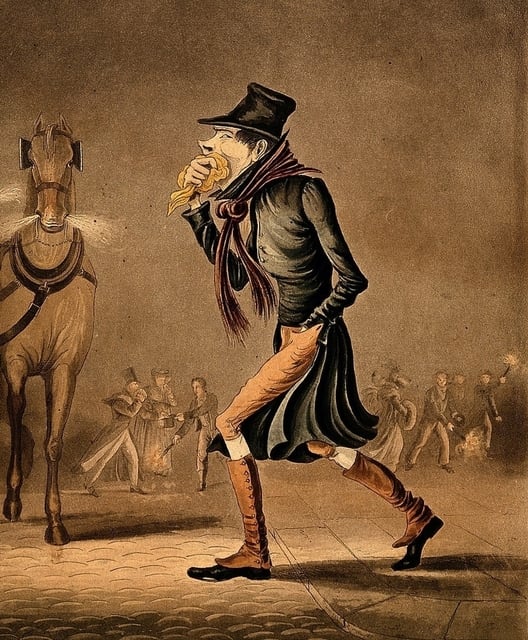 Deadly fogs, moralistic diatribes, debunked medical theory — Brett Beasley explores a piece of Victorian science fiction considered to be the first modern tale of urban apocalypse.
Tribal Life in Old Lyme: Canada’s Colorblind Chronicler and his Connecticut Exile
September 2, 2015
Books & Painting & Art
Abigail Walthausen explores the life and work of Arthur Heming, the Canadian painter who — having been diagnosed with colourblindness as a child — worked for most of his life in a distinctive palette of black, yellow, and white.
When the Birds and the Bees Were Not Enough: Aristotle’s Masterpiece
August 19, 2015
Books & Science
Mary Fissell on how a wildly popular sex manual — first published in 17th-century London and reprinted in hundreds of subsequent editions — both taught and titillated through the early modern period and beyond.
The Mystery of Lewis Carroll
July 1, 2015
Books
Deadly fogs, moralistic diatribes, debunked medical theory — Brett Beasley explores a piece of Victorian science fiction considered to be the first modern tale of urban apocalypse.
Tribal Life in Old Lyme: Canada’s Colorblind Chronicler and his Connecticut Exile
September 2, 2015
Books & Painting & Art
Abigail Walthausen explores the life and work of Arthur Heming, the Canadian painter who — having been diagnosed with colourblindness as a child — worked for most of his life in a distinctive palette of black, yellow, and white.
When the Birds and the Bees Were Not Enough: Aristotle’s Masterpiece
August 19, 2015
Books & Science
Mary Fissell on how a wildly popular sex manual — first published in 17th-century London and reprinted in hundreds of subsequent editions — both taught and titillated through the early modern period and beyond.
The Mystery of Lewis Carroll
July 1, 2015
Books
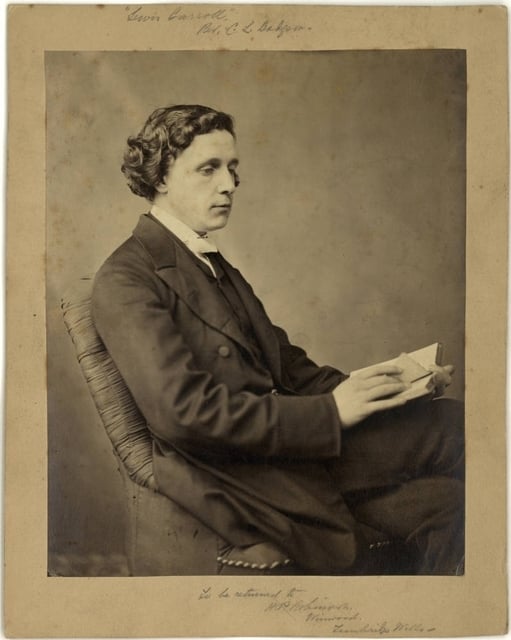 The author of Alice’s Adventures in Wonderland, which sees its 150th anniversary this year, remains to this day an enigmatic figure. Jenny Woolf explores the joys and struggles of this brilliant, secretive, and complex man, creator of one of the world’s best-loved stories.
A Bestiary of Sir Thomas Browne
June 17, 2015
Books & Religion
The author of Alice’s Adventures in Wonderland, which sees its 150th anniversary this year, remains to this day an enigmatic figure. Jenny Woolf explores the joys and struggles of this brilliant, secretive, and complex man, creator of one of the world’s best-loved stories.
A Bestiary of Sir Thomas Browne
June 17, 2015
Books & Religion
 Hugh Aldersey-Williams takes a tour through Thomas Browne’s Pseudodoxia Epidemica, a work which sees one of the 17th-century’s greatest writers stylishly debunk all manner of myths, in particular those relating to the world of animals.
The Nightwalker and the Nocturnal Picaresque
June 3, 2015
Books & Literature
Hugh Aldersey-Williams takes a tour through Thomas Browne’s Pseudodoxia Epidemica, a work which sees one of the 17th-century’s greatest writers stylishly debunk all manner of myths, in particular those relating to the world of animals.
The Nightwalker and the Nocturnal Picaresque
June 3, 2015
Books & Literature
 The introduction of street lighting to 17th-century London saw an explosion of nocturnal activity in the capital, most of revolving around the selling of sex. Matthew Beaumont explores how some writers, with the intention of condemning these nefarious goings-on, took to the city’s streets after dark, and in the process gave birth to a peculiar new literary genre.
Black on Black
April 9, 2015
Books & Painting & Science & Philosophy
The introduction of street lighting to 17th-century London saw an explosion of nocturnal activity in the capital, most of revolving around the selling of sex. Matthew Beaumont explores how some writers, with the intention of condemning these nefarious goings-on, took to the city’s streets after dark, and in the process gave birth to a peculiar new literary genre.
Black on Black
April 9, 2015
Books & Painting & Science & Philosophy
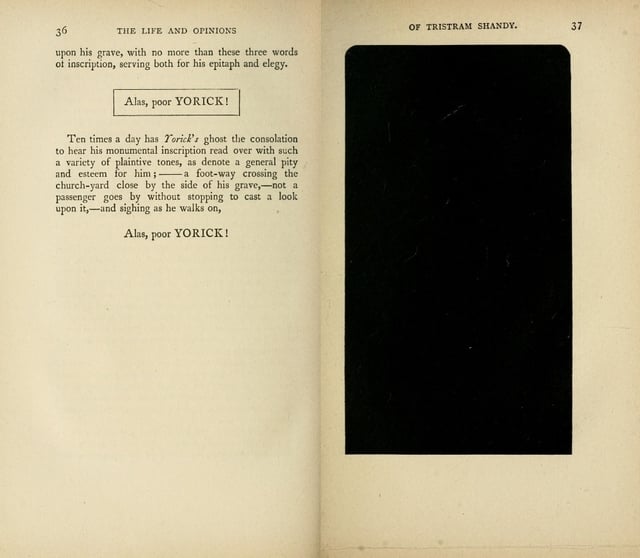 Should we consider black a colour, the absence of colour, or a suspension of vision produced by a deprivation of light? Beginning with Robert Fludd’s attempt to picture nothingness, Eugene Thacker reflects* on some of the ways in which blackness has been used and thought about through the history of art and philosophical thought.
Sex and Science in Robert Thornton’s Temple of Flora
March 11, 2015
Books & Poems & Painting & Science & Art
Should we consider black a colour, the absence of colour, or a suspension of vision produced by a deprivation of light? Beginning with Robert Fludd’s attempt to picture nothingness, Eugene Thacker reflects* on some of the ways in which blackness has been used and thought about through the history of art and philosophical thought.
Sex and Science in Robert Thornton’s Temple of Flora
March 11, 2015
Books & Poems & Painting & Science & Art
 Bridal beds, blushing captives, and swollen trunks – Carl Linnaeus’ taxonomy of plants heralded a whole new era in 18th-century Europe of plants being spoken of in sexualised terms. Martin Kemp explores* how this association between the floral and erotic reached its visual zenith in Robert Thornton’s exquisitely illustrated Temple of Flora.
The Eternal Guffaw: John Leech and The Comic History of Rome
February 25, 2015
Books & Art
At the beginning of the 1850s, two stalwarts from the heart of London-based satirical magazine Punch, Gilbert Abbott à Beckett and John Leech, cast their mocking eye a little further back in time and published The Comic History of Rome. Caroline Wazer explores how it is not in the text but rather in Leech’s delightfully anachronistic illustrations that the book’s true subversion lies, offering as they do a critique of Victorian society itself.
Neanderthals in 3D: L’Homme de La Chapelle
February 11, 2015
Books & Photography & Science
Bridal beds, blushing captives, and swollen trunks – Carl Linnaeus’ taxonomy of plants heralded a whole new era in 18th-century Europe of plants being spoken of in sexualised terms. Martin Kemp explores* how this association between the floral and erotic reached its visual zenith in Robert Thornton’s exquisitely illustrated Temple of Flora.
The Eternal Guffaw: John Leech and The Comic History of Rome
February 25, 2015
Books & Art
At the beginning of the 1850s, two stalwarts from the heart of London-based satirical magazine Punch, Gilbert Abbott à Beckett and John Leech, cast their mocking eye a little further back in time and published The Comic History of Rome. Caroline Wazer explores how it is not in the text but rather in Leech’s delightfully anachronistic illustrations that the book’s true subversion lies, offering as they do a critique of Victorian society itself.
Neanderthals in 3D: L’Homme de La Chapelle
February 11, 2015
Books & Photography & Science
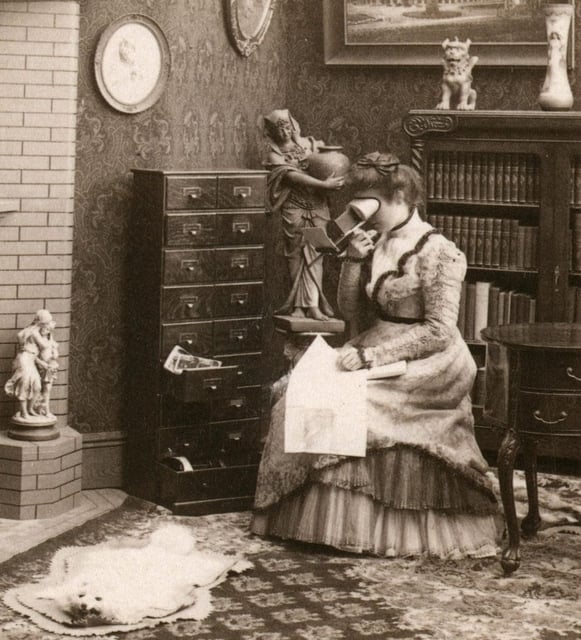 More than just a favourite of Victorian home entertainment, the stereoscope and the 3D images it created were also used in the field of science. Lydia Pyne explores how the French palaeontologist Marcellin Boule utilised the device in his groundbreaking monograph analysing one of the early-20th-century’s most significant archaeological discoveries – the Neanderthal skeleton of La Chapelle.
The Poet, the Physician and the Birth of the Modern Vampire
October 16, 2014
Books & Literature & Religion
From that famed night of ghost-stories in a Lake Geneva villa in 1816, as well as Frankenstein’s monster, there arose that other great figure of 19th-century gothic fiction – the vampire – a creation of Lord Byron’s personal physician John Polidori. Andrew McConnell Stott explores how a fractious relationship between Polidori and his poet employer lies behind the tale, with Byron himself providing a model for the blood-sucking aristocratic figure of the legend we are familiar with today.
Ghostwriter and Ghost: The Strange Case of Pearl Curran & Patience Worth
September 17, 2014
Books & Poems & Literature & Religion
In early 20th-century St. Louis, Pearl Curran claimed to have conjured a long-dead New England puritan named Patience Worth through a Ouija board. Although mostly unknown today, the resulting books, poems, and plays that Worth “dictated” to Curran earned great praise at the time. Ed Simon investigates the curious and nearly forgotten literary fruits of a “ghost” and her ghostwriter.
The Tale of Beatrix Potter
July 23, 2014
Books & Art
More than just a favourite of Victorian home entertainment, the stereoscope and the 3D images it created were also used in the field of science. Lydia Pyne explores how the French palaeontologist Marcellin Boule utilised the device in his groundbreaking monograph analysing one of the early-20th-century’s most significant archaeological discoveries – the Neanderthal skeleton of La Chapelle.
The Poet, the Physician and the Birth of the Modern Vampire
October 16, 2014
Books & Literature & Religion
From that famed night of ghost-stories in a Lake Geneva villa in 1816, as well as Frankenstein’s monster, there arose that other great figure of 19th-century gothic fiction – the vampire – a creation of Lord Byron’s personal physician John Polidori. Andrew McConnell Stott explores how a fractious relationship between Polidori and his poet employer lies behind the tale, with Byron himself providing a model for the blood-sucking aristocratic figure of the legend we are familiar with today.
Ghostwriter and Ghost: The Strange Case of Pearl Curran & Patience Worth
September 17, 2014
Books & Poems & Literature & Religion
In early 20th-century St. Louis, Pearl Curran claimed to have conjured a long-dead New England puritan named Patience Worth through a Ouija board. Although mostly unknown today, the resulting books, poems, and plays that Worth “dictated” to Curran earned great praise at the time. Ed Simon investigates the curious and nearly forgotten literary fruits of a “ghost” and her ghostwriter.
The Tale of Beatrix Potter
July 23, 2014
Books & Art
 This year, the works of one of the most successful and universal writers of all time came into the public domain in many countries around the world. The Tale of Peter Rabbit, The Tale of Squirrel Nutkin, The Tale of Benjamin Bunny, The Tale of Jemima Puddle-Duck – in all, thirty-three books bearing the name “Beatrix Potter” have sold close to 200 million copies. Frank Delaney enquires into the more complex woman behind the safe and warm-hearted stories.
Moonblight and Six Feet of Romance: Dan Carter Beard’s Foray into Fiction
June 11, 2014
Books & Literature & Art
This year, the works of one of the most successful and universal writers of all time came into the public domain in many countries around the world. The Tale of Peter Rabbit, The Tale of Squirrel Nutkin, The Tale of Benjamin Bunny, The Tale of Jemima Puddle-Duck – in all, thirty-three books bearing the name “Beatrix Potter” have sold close to 200 million copies. Frank Delaney enquires into the more complex woman behind the safe and warm-hearted stories.
Moonblight and Six Feet of Romance: Dan Carter Beard’s Foray into Fiction
June 11, 2014
Books & Literature & Art
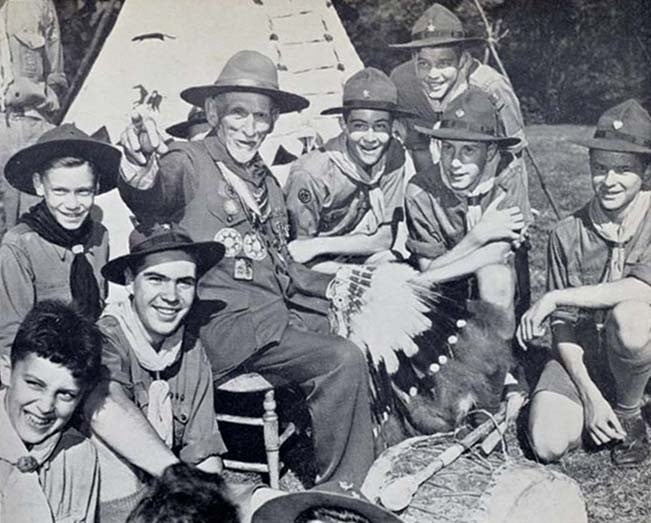 An esoteric disease which reveals things in their true light; three pairs of disembodied feet galavanting about the countryside – Abigail Walthausen explores the brief but strange literary career of Daniel Carter Beard, illustrator for Mark Twain and a founding father of the Boy Scouts of America.
In the Image of God: John Comenius and the First Children’s Picture Book
May 14, 2014
Books & Religion
In the mid 17th-century John Comenius published what many consider to be the first picture book dedicated to the education of young children, Orbis Sensualium Pictus – or The World of Things Obvious to the Senses drawn in Pictures, as it was rendered in English. Charles McNamara explores how, contrary to Comenius’ assertions, the book can be seen to be as much about the invisible world as the visible.
1592: Coining Columbus
April 16, 2014
Books & Art & History
An esoteric disease which reveals things in their true light; three pairs of disembodied feet galavanting about the countryside – Abigail Walthausen explores the brief but strange literary career of Daniel Carter Beard, illustrator for Mark Twain and a founding father of the Boy Scouts of America.
In the Image of God: John Comenius and the First Children’s Picture Book
May 14, 2014
Books & Religion
In the mid 17th-century John Comenius published what many consider to be the first picture book dedicated to the education of young children, Orbis Sensualium Pictus – or The World of Things Obvious to the Senses drawn in Pictures, as it was rendered in English. Charles McNamara explores how, contrary to Comenius’ assertions, the book can be seen to be as much about the invisible world as the visible.
1592: Coining Columbus
April 16, 2014
Books & Art & History
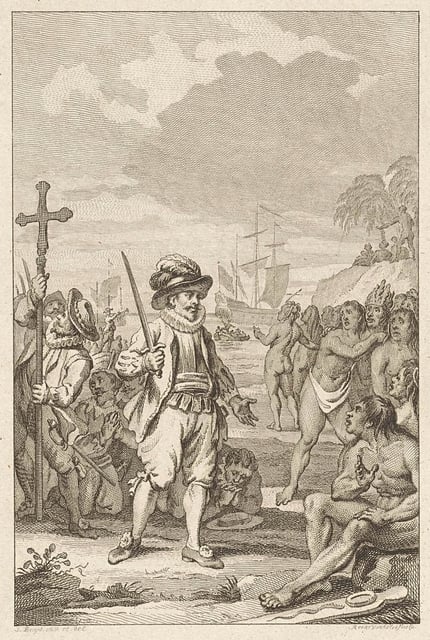 For many, the arrival of Christopher Columbus in the Americas is inextricably linked to a particular image: a small group of confident men on a tropical beach formally announcing their presence to the dumbfounded Amerindians. Michiel van Groesen explores the origins of this Eurocentric iconography and ascribes its persistence to the editorial strategy of the publisher who invented the initial design, a full century after Columbus’ encounter.
Victorian Occultism and the Art of Synesthesia
March 19, 2014
Books & Painting & Philosophy & Art
Grounded in the theory that ideas, emotions, and even events, can manifest as visible auras, Annie Besant and Charles Leadbeater’s Thought-Forms (1901) is an odd and intriguing work. Benjamin Breen explores these “synesthetic” abstractions and asks to what extent they, and the Victorian mysticism of which they were born, influenced the Modernist movement that flourished in the following decades.
Encounter at the Crossroads of Europe — the Fellowship of Zweig and Verhaeren
December 11, 2013
Books & Literature & History
Stefan Zweig, whose works passed into the public domain this year in many countries around the world, was one of the most famous writers of the 1920s and 30s. Will Stone explores the importance of the Austrian’s early friendship with the oft overlooked Belgian poet Emile Verhaeren.
Lost in Translation: Proust and Scott Moncrieff
November 13, 2013
Books & Literature
Scott Moncrieff’s English translation of Proust’s A la recherche du temps perdu is widely hailed as a masterpiece in its own right. His rendering of the title as Remembrance of Things Past is not, however, considered a high point. William C. Carter explores the two men’s correspondence on this somewhat sticky issue and how the Shakespearean title missed the mark regarding Proust’s theory of memory.
Elizabeth Bisland’s Race Around the World
October 16, 2013
Books & Literature & History & Events
For many, the arrival of Christopher Columbus in the Americas is inextricably linked to a particular image: a small group of confident men on a tropical beach formally announcing their presence to the dumbfounded Amerindians. Michiel van Groesen explores the origins of this Eurocentric iconography and ascribes its persistence to the editorial strategy of the publisher who invented the initial design, a full century after Columbus’ encounter.
Victorian Occultism and the Art of Synesthesia
March 19, 2014
Books & Painting & Philosophy & Art
Grounded in the theory that ideas, emotions, and even events, can manifest as visible auras, Annie Besant and Charles Leadbeater’s Thought-Forms (1901) is an odd and intriguing work. Benjamin Breen explores these “synesthetic” abstractions and asks to what extent they, and the Victorian mysticism of which they were born, influenced the Modernist movement that flourished in the following decades.
Encounter at the Crossroads of Europe — the Fellowship of Zweig and Verhaeren
December 11, 2013
Books & Literature & History
Stefan Zweig, whose works passed into the public domain this year in many countries around the world, was one of the most famous writers of the 1920s and 30s. Will Stone explores the importance of the Austrian’s early friendship with the oft overlooked Belgian poet Emile Verhaeren.
Lost in Translation: Proust and Scott Moncrieff
November 13, 2013
Books & Literature
Scott Moncrieff’s English translation of Proust’s A la recherche du temps perdu is widely hailed as a masterpiece in its own right. His rendering of the title as Remembrance of Things Past is not, however, considered a high point. William C. Carter explores the two men’s correspondence on this somewhat sticky issue and how the Shakespearean title missed the mark regarding Proust’s theory of memory.
Elizabeth Bisland’s Race Around the World
October 16, 2013
Books & Literature & History & Events
 Matthew Goodman explores the life and writings of Elizabeth Bisland, an American journalist propelled into the limelight when she set out in 1889 – head-to-head with fellow journalist Nellie Bly – on a journey to beat Phileas Fogg’s fictitious 80-day circumnavigation of the globe.
The Lost World of the London Coffeehouse
August 7, 2013
Books & History
In contrast to today’s rather mundane spawn of coffeehouse chains, the London of the 17th and 18th century was home to an eclectic and thriving coffee drinking scene. Dr Matthew Green explores the halcyon days of the London coffeehouse, a haven for caffeine-fueled debate and innovation which helped to shape the modern world.
Robert Baden-Powell’s Entomological Intrigues
July 10, 2013
Books
In 1915 Robert Baden-Powell, founder of the worldwide Scouts movement, published his DIY guide to espionage, My Adventures as a Spy. Mark Kaufman explores how the book’s ideas to utilise such natural objects as butterflies, moths and leaves, worked to mythologize British resourcefulness and promote a certain ‘weaponization of the pastoral’.
Lucian’s Trips to the Moon
June 26, 2013
Books & Literature & Philosophy
Matthew Goodman explores the life and writings of Elizabeth Bisland, an American journalist propelled into the limelight when she set out in 1889 – head-to-head with fellow journalist Nellie Bly – on a journey to beat Phileas Fogg’s fictitious 80-day circumnavigation of the globe.
The Lost World of the London Coffeehouse
August 7, 2013
Books & History
In contrast to today’s rather mundane spawn of coffeehouse chains, the London of the 17th and 18th century was home to an eclectic and thriving coffee drinking scene. Dr Matthew Green explores the halcyon days of the London coffeehouse, a haven for caffeine-fueled debate and innovation which helped to shape the modern world.
Robert Baden-Powell’s Entomological Intrigues
July 10, 2013
Books
In 1915 Robert Baden-Powell, founder of the worldwide Scouts movement, published his DIY guide to espionage, My Adventures as a Spy. Mark Kaufman explores how the book’s ideas to utilise such natural objects as butterflies, moths and leaves, worked to mythologize British resourcefulness and promote a certain ‘weaponization of the pastoral’.
Lucian’s Trips to the Moon
June 26, 2013
Books & Literature & Philosophy
 With his Vera Historia, the 2nd century satirist Lucian of Samosata wrote the first detailed account of a trip to the moon in the Western tradition and, some argue, also one of the earliest science fiction narratives. Aaron Parrett explores how Lucian used this lunar vantage point to take a satirical look back at the philosophers of Earth and their ideas of “truth”.
Sir Arthur and the Fairies
June 12, 2013
Books & Photography & History & Religion & Events
With his Vera Historia, the 2nd century satirist Lucian of Samosata wrote the first detailed account of a trip to the moon in the Western tradition and, some argue, also one of the earliest science fiction narratives. Aaron Parrett explores how Lucian used this lunar vantage point to take a satirical look back at the philosophers of Earth and their ideas of “truth”.
Sir Arthur and the Fairies
June 12, 2013
Books & Photography & History & Religion & Events
 In the spring of 1920, at the beginning of a growing fascination with spiritualism brought on by the death of his son and brother in WWI, Arthur Conan Doyle took up the case of the Cottingley Fairies. Mary Losure explores how the creator of Sherlock Holmes became convinced that the ‘fairy photographs’ taken by two girls from Yorkshire were real.
Mother Goose’s French Birth (1697) and British Afterlife (1729)
May 29, 2013
Books & Literature
Christine Jones explores the early English translations of Charles Perrault’s 1697 collection of fairy tales and how a change in running order was key to them becoming the stories for children which we know today.
Athanasius Kircher and the Hieroglyphic Sphinx
May 16, 2013
Books & Art & History & Religion
More than 170 years before Jean-François Champollion had the first real success in translating Egyptian hieroglyphs, the 17th century Jesuit scholar Athanasius Kircher was convinced he had cracked it. He was very wrong. Daniel Stolzenberg looks at Kircher’s Egyptian Oedipus, a book that has been called “one of the most learned monstrosities of all times.”
As a Lute out of Tune: Robert Burton’s Melancholy
May 1, 2013
Books & Science & Philosophy
In 1621 Robert Burton first published his masterpiece The Anatomy of Melancholy, a vast feat of scholarship examining in encyclopaedic detail that most enigmatic of maladies. Noga Arikha explores the book, said to be the favorite of both Samuel Johnson and Keats, and places it within the context of the humoural theory so popular at the time.
Vesalius and the Body Metaphor
April 18, 2013
Books & Science & History
In the spring of 1920, at the beginning of a growing fascination with spiritualism brought on by the death of his son and brother in WWI, Arthur Conan Doyle took up the case of the Cottingley Fairies. Mary Losure explores how the creator of Sherlock Holmes became convinced that the ‘fairy photographs’ taken by two girls from Yorkshire were real.
Mother Goose’s French Birth (1697) and British Afterlife (1729)
May 29, 2013
Books & Literature
Christine Jones explores the early English translations of Charles Perrault’s 1697 collection of fairy tales and how a change in running order was key to them becoming the stories for children which we know today.
Athanasius Kircher and the Hieroglyphic Sphinx
May 16, 2013
Books & Art & History & Religion
More than 170 years before Jean-François Champollion had the first real success in translating Egyptian hieroglyphs, the 17th century Jesuit scholar Athanasius Kircher was convinced he had cracked it. He was very wrong. Daniel Stolzenberg looks at Kircher’s Egyptian Oedipus, a book that has been called “one of the most learned monstrosities of all times.”
As a Lute out of Tune: Robert Burton’s Melancholy
May 1, 2013
Books & Science & Philosophy
In 1621 Robert Burton first published his masterpiece The Anatomy of Melancholy, a vast feat of scholarship examining in encyclopaedic detail that most enigmatic of maladies. Noga Arikha explores the book, said to be the favorite of both Samuel Johnson and Keats, and places it within the context of the humoural theory so popular at the time.
Vesalius and the Body Metaphor
April 18, 2013
Books & Science & History
 City streets, a winepress, pulleys, spinning tops, a ray fish, curdled milk: just a few of the many images used by 16th century anatomist Andreas Vesalius to explain the workings of the human body in his seminal work De Humani Corporis Fabrica. Marri Lynn explores.
The Redemption of Saint Anthony
March 7, 2013
Books & Art & Religion
City streets, a winepress, pulleys, spinning tops, a ray fish, curdled milk: just a few of the many images used by 16th century anatomist Andreas Vesalius to explain the workings of the human body in his seminal work De Humani Corporis Fabrica. Marri Lynn explores.
The Redemption of Saint Anthony
March 7, 2013
Books & Art & Religion
 Gustave Flaubert, best known for his masterpiece Madame Bovary, spent nearly thirty years working on a surreal and largely ‘unreadable’ retelling of the temptation of Saint Anthony. Colin Dickey explores how it was only in the dark and compelling illustrations of Odilon Redon, made years later, that Flaubert’s strangest work finally came to life.
The Curious World of Isaac D’Israeli
February 6, 2013
Books & Literature & History
Marvin Spevack introduces the Curiosities of Literature, the epic cornucopia of essays on all things literary by Isaac D’Israeli: a scholar, man of letters and father of British Prime Minister Benjamin Disraeli.
Simple Songs: Virginia Woolf and Music
January 9, 2013
Books & Music & Literature
Last year saw the works of Virginia Woolf enter the public domain in many countries around the world. To celebrate Emma Sutton looks at Woolf’s short story “A Simple Melody” and the influence which music had upon the writer who once wrote that music was “nearest to truth”.
The Forgotten Tales of the Brothers Grimm
December 20, 2012
Books & Literature & History
To mark the 200th year since the Brothers Grimm first published their Kinder-und Hausmärchen, Jack Zipes explores the importance of this neglected first edition and what it tells us about the motives and passions of the two folklorist brothers.
Henry Morton Stanley and the Pygmies of “Darkest Africa”
November 29, 2012
Books & History
After returning from his disastrous mission to central Africa to rescue a German colonial governor, the explorer Henry Morton Stanley was eager to distract from accusations of brutality with his ‘discovery’ of African pygmies. Brian Murray explores how after Stanley’s trip the African pygmy, in the form of stereotype and allegory, made its way into late Victorian society.
The Strangely Troubled Life of Digby Mackworth Dolben
November 14, 2012
Books & Poems & Literature
In 1911 the soon-to-be poet laureate Robert Bridges published the poems of Digby Mackworth Dolben, a school friend who had drowned to death at the age of 19 almost half a century earlier. Carl Miller looks at Bridges’ lengthy introduction in which he tells of the short and tragic life of the boy with whom fellow poet Gerard Manley Hopkins was reportedly besotted.
Athanasius, Underground
November 1, 2012
Books & Science & Art & History
Gustave Flaubert, best known for his masterpiece Madame Bovary, spent nearly thirty years working on a surreal and largely ‘unreadable’ retelling of the temptation of Saint Anthony. Colin Dickey explores how it was only in the dark and compelling illustrations of Odilon Redon, made years later, that Flaubert’s strangest work finally came to life.
The Curious World of Isaac D’Israeli
February 6, 2013
Books & Literature & History
Marvin Spevack introduces the Curiosities of Literature, the epic cornucopia of essays on all things literary by Isaac D’Israeli: a scholar, man of letters and father of British Prime Minister Benjamin Disraeli.
Simple Songs: Virginia Woolf and Music
January 9, 2013
Books & Music & Literature
Last year saw the works of Virginia Woolf enter the public domain in many countries around the world. To celebrate Emma Sutton looks at Woolf’s short story “A Simple Melody” and the influence which music had upon the writer who once wrote that music was “nearest to truth”.
The Forgotten Tales of the Brothers Grimm
December 20, 2012
Books & Literature & History
To mark the 200th year since the Brothers Grimm first published their Kinder-und Hausmärchen, Jack Zipes explores the importance of this neglected first edition and what it tells us about the motives and passions of the two folklorist brothers.
Henry Morton Stanley and the Pygmies of “Darkest Africa”
November 29, 2012
Books & History
After returning from his disastrous mission to central Africa to rescue a German colonial governor, the explorer Henry Morton Stanley was eager to distract from accusations of brutality with his ‘discovery’ of African pygmies. Brian Murray explores how after Stanley’s trip the African pygmy, in the form of stereotype and allegory, made its way into late Victorian society.
The Strangely Troubled Life of Digby Mackworth Dolben
November 14, 2012
Books & Poems & Literature
In 1911 the soon-to-be poet laureate Robert Bridges published the poems of Digby Mackworth Dolben, a school friend who had drowned to death at the age of 19 almost half a century earlier. Carl Miller looks at Bridges’ lengthy introduction in which he tells of the short and tragic life of the boy with whom fellow poet Gerard Manley Hopkins was reportedly besotted.
Athanasius, Underground
November 1, 2012
Books & Science & Art & History
 With his enormous range of scholarly pursuits the 17th-century polymath Athanasius Kircher has been hailed as the last Renaissance man and “the master of hundred arts”. John Glassie looks at one of Kircher’s great masterworks Mundus Subterraneus and how it was inspired by a subterranean adventure Kircher himself made into the bowl of Vesuvius.
Trüth, Beaüty, and Volapük
October 17, 2012
Books & Philosophy & History
With his enormous range of scholarly pursuits the 17th-century polymath Athanasius Kircher has been hailed as the last Renaissance man and “the master of hundred arts”. John Glassie looks at one of Kircher’s great masterworks Mundus Subterraneus and how it was inspired by a subterranean adventure Kircher himself made into the bowl of Vesuvius.
Trüth, Beaüty, and Volapük
October 17, 2012
Books & Philosophy & History
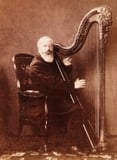 Arika Okrent explores the rise and fall of Volapük – a universal language created in the late 19th century by a German priest called Johann Schleyer.
The Implacability of Things
October 3, 2012
Books & Literature
Arika Okrent explores the rise and fall of Volapük – a universal language created in the late 19th century by a German priest called Johann Schleyer.
The Implacability of Things
October 3, 2012
Books & Literature
 Jonathan Lamb explores the genre of ‘it-narratives’ – stories told from the point of view of an object, often as it travels in circulation through human hands.
The Last Great Explorer: William F. Warren and the Search for Eden
September 6, 2012
Books & Science & Philosophy & Religion
Of all the attempts throughout history to geographically locate the Garden of Eden one of the most compelling was that set out by minister and president of Boston University, William F. Warren. Brook Wilensky-Lanford looks at the ideas of the man who, in his book Paradise Found, proposed the home of all humanity to be at the North Pole.
The Lancashire Witches 1612-2012
August 22, 2012
Books & History
Not long after ten Lancashire residents were found guilty of witchcraft and hanged in August 1612, the official proceedings of the trial were published by the clerk of the court Thomas Potts in his The Wonderfull Discoverie of Witches in the Countie of Lancaster. Four hundred years on, Robert Poole reflects on England’s biggest witch trial and how it still has relevance today.
The Polyglot of Bologna
June 26, 2012
Books & History
Jonathan Lamb explores the genre of ‘it-narratives’ – stories told from the point of view of an object, often as it travels in circulation through human hands.
The Last Great Explorer: William F. Warren and the Search for Eden
September 6, 2012
Books & Science & Philosophy & Religion
Of all the attempts throughout history to geographically locate the Garden of Eden one of the most compelling was that set out by minister and president of Boston University, William F. Warren. Brook Wilensky-Lanford looks at the ideas of the man who, in his book Paradise Found, proposed the home of all humanity to be at the North Pole.
The Lancashire Witches 1612-2012
August 22, 2012
Books & History
Not long after ten Lancashire residents were found guilty of witchcraft and hanged in August 1612, the official proceedings of the trial were published by the clerk of the court Thomas Potts in his The Wonderfull Discoverie of Witches in the Countie of Lancaster. Four hundred years on, Robert Poole reflects on England’s biggest witch trial and how it still has relevance today.
The Polyglot of Bologna
June 26, 2012
Books & History
 Michael Erard takes a look at The Life of Cardinal Mezzofanti, a book exploring the extraordinary talent of the 19th century Italian cardinal who was reported to be able to speak over seventy languages.
Seeing Joyce
June 12, 2012
Books & Painting & Literature
Michael Erard takes a look at The Life of Cardinal Mezzofanti, a book exploring the extraordinary talent of the 19th century Italian cardinal who was reported to be able to speak over seventy languages.
Seeing Joyce
June 12, 2012
Books & Painting & Literature
 This year’s ‘Bloomsday’ – 108 years after Leopold Bloom took his legendary walk around Dublin on the 16th June 1904 – is the first since the works of James Joyce entered the public domain. Frank Delaney asks whether we should perhaps now stop trying to read Joyce and instead make visits to him as to a gallery.
Lost Libraries
February 20, 2012
Books & Literature & History
This year’s ‘Bloomsday’ – 108 years after Leopold Bloom took his legendary walk around Dublin on the 16th June 1904 – is the first since the works of James Joyce entered the public domain. Frank Delaney asks whether we should perhaps now stop trying to read Joyce and instead make visits to him as to a gallery.
Lost Libraries
February 20, 2012
Books & Literature & History
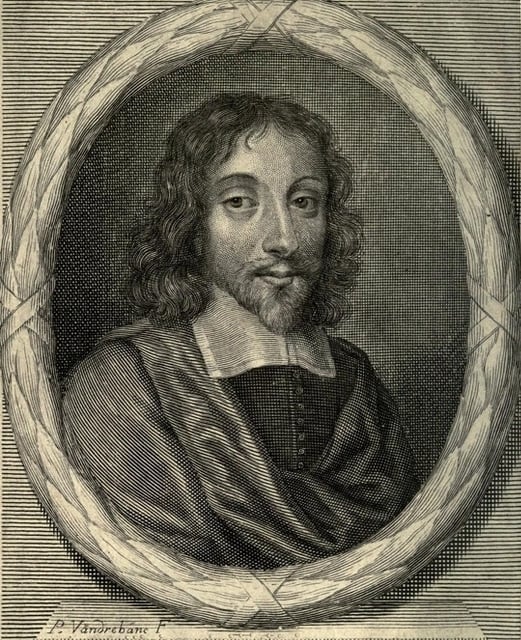 In the latter half of the 17th century the English polymath Thomas Browne wrote Musaeum Clausum, an imagined inventory of ‘remarkable books, antiquities, pictures and rarities of several kinds, scarce or never seen by any man now living’. Claire Preston explores Browne’s extraordinary catalogue amid the wider context of a Renaissance preoccupation with lost intellectual treasures.
Selma Lagerlöf: Surface and Depth
January 11, 2012
Books & Literature
In 2011 many countries around the world welcomed The Wonderful Adventures of Nils and the other works of the Swedish writer Selma Lagerlöf into the public domain. Jenny Watson looks at the importance of Lagerlöf’s oeuvre and the complex depths beneath her seemingly simple tales and public persona.
The Mysteries of Nature and Art
November 28, 2011
Books & Science & Art
In the latter half of the 17th century the English polymath Thomas Browne wrote Musaeum Clausum, an imagined inventory of ‘remarkable books, antiquities, pictures and rarities of several kinds, scarce or never seen by any man now living’. Claire Preston explores Browne’s extraordinary catalogue amid the wider context of a Renaissance preoccupation with lost intellectual treasures.
Selma Lagerlöf: Surface and Depth
January 11, 2012
Books & Literature
In 2011 many countries around the world welcomed The Wonderful Adventures of Nils and the other works of the Swedish writer Selma Lagerlöf into the public domain. Jenny Watson looks at the importance of Lagerlöf’s oeuvre and the complex depths beneath her seemingly simple tales and public persona.
The Mysteries of Nature and Art
November 28, 2011
Books & Science & Art
 Julie Gardham, Senior Assistant Librarian at University of Glasgow’s Special Collections Department, takes a look at the book that was said to have spurred a young Isaac Newton onto the scientific path, The Mysteries of Nature and Art by John Bate.
The Memoirs of Joseph Grimaldi
November 14, 2011
Books & History
Julie Gardham, Senior Assistant Librarian at University of Glasgow’s Special Collections Department, takes a look at the book that was said to have spurred a young Isaac Newton onto the scientific path, The Mysteries of Nature and Art by John Bate.
The Memoirs of Joseph Grimaldi
November 14, 2011
Books & History
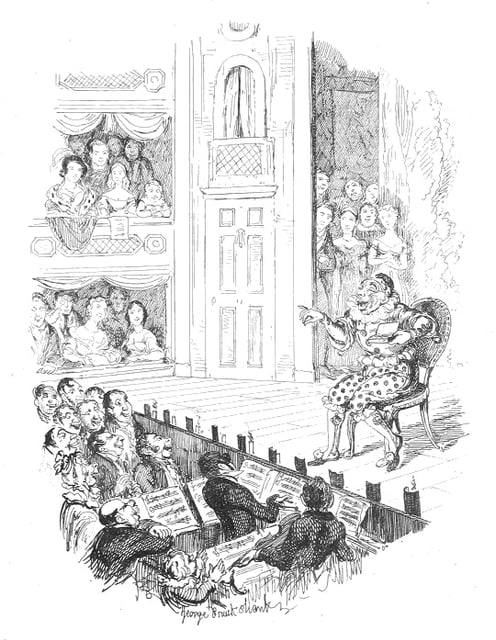 Andrew McConnell Stott, author of The Pantomime Life of Joseph Grimaldi, introduces the life and memoirs of the most famous and celebrated of English clowns.
Navigating Dürer’s Woodcuts for The Ship of Fools
October 25, 2011
Books & Art & Religion
Andrew McConnell Stott, author of The Pantomime Life of Joseph Grimaldi, introduces the life and memoirs of the most famous and celebrated of English clowns.
Navigating Dürer’s Woodcuts for The Ship of Fools
October 25, 2011
Books & Art & Religion
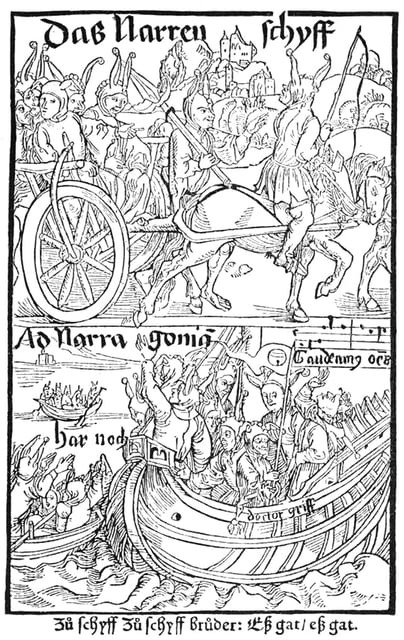 At the start of his career, as a young man in his twenties, Albrecht Dürer created a series of woodcuts to illustrate Sebastian Brant’s The Ship of Fools of 1494. Dürer scholar Rangsook Yoon explores the significance of these early pieces and how in their subtlety of allegory they show promise of his masterpieces to come.
Stories of a Hollow Earth
October 10, 2011
Books & Literature
At the start of his career, as a young man in his twenties, Albrecht Dürer created a series of woodcuts to illustrate Sebastian Brant’s The Ship of Fools of 1494. Dürer scholar Rangsook Yoon explores the significance of these early pieces and how in their subtlety of allegory they show promise of his masterpieces to come.
Stories of a Hollow Earth
October 10, 2011
Books & Literature
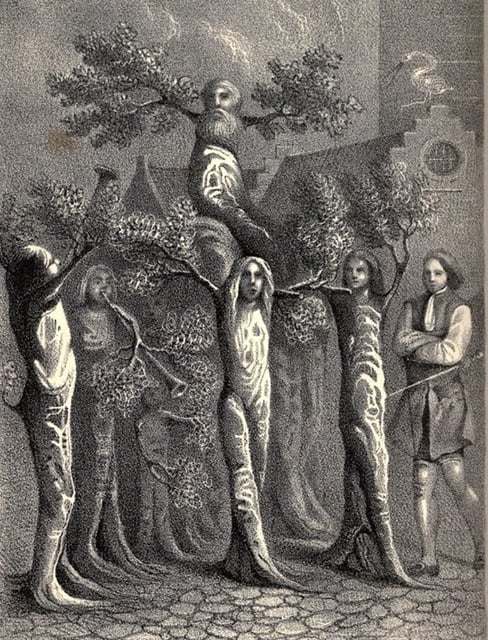 In 1741 the Norwegian-Danish author Ludvig Holberg published Klimii Iter Subterraneum, a satirical science-fiction/fantasy novel detailing the adventures of its hero Niels Klim in a utopian society existing beneath the surface of the earth. Peter Fitting, author of Subterranean Worlds: A Critical Anthology, explores Holberg’s book in the wider context of the hollow earth theory.
A Few Words about F. Scott Fitzgerald
September 26, 2011
Books & Literature
In 1741 the Norwegian-Danish author Ludvig Holberg published Klimii Iter Subterraneum, a satirical science-fiction/fantasy novel detailing the adventures of its hero Niels Klim in a utopian society existing beneath the surface of the earth. Peter Fitting, author of Subterranean Worlds: A Critical Anthology, explores Holberg’s book in the wider context of the hollow earth theory.
A Few Words about F. Scott Fitzgerald
September 26, 2011
Books & Literature
 In most countries around the world, 2011 saw the writings of F. Scott Fitzgerald enter the public domain. Scott Donaldson, author of the biography Fool For Love: F. Scott Fitzgerald, explores the obscuring nature of his legend and the role that women played in his life and work.
Aspiring to a Higher Plane
September 19, 2011
Books & Literature & Science & Philosophy
In most countries around the world, 2011 saw the writings of F. Scott Fitzgerald enter the public domain. Scott Donaldson, author of the biography Fool For Love: F. Scott Fitzgerald, explores the obscuring nature of his legend and the role that women played in his life and work.
Aspiring to a Higher Plane
September 19, 2011
Books & Literature & Science & Philosophy
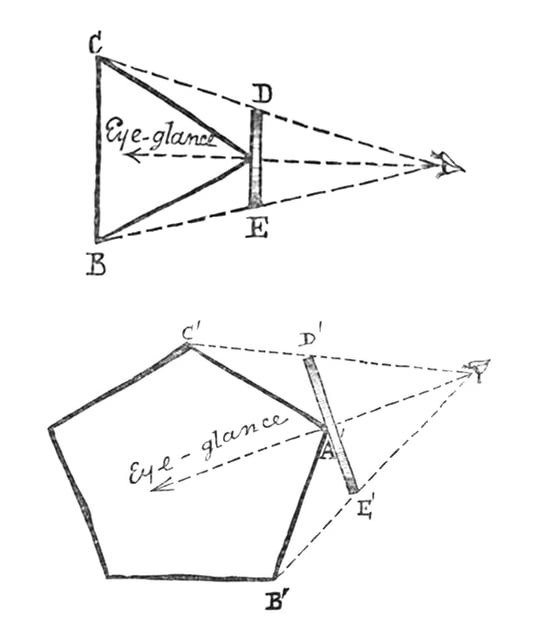 In 1884 Edwin Abbott Abbott published Flatland: A Romance of Many Dimensions, the first ever book that could be described as ‘mathematical fiction’. Ian Stewart, author of Flatterland and The Annotated Flatland, introduces the strange tale of the geometric adventures of A. Square.
Robert Fludd and His Images of The Divine
September 13, 2011
Books & Science & Philosophy & Art & Religion
In 1884 Edwin Abbott Abbott published Flatland: A Romance of Many Dimensions, the first ever book that could be described as ‘mathematical fiction’. Ian Stewart, author of Flatterland and The Annotated Flatland, introduces the strange tale of the geometric adventures of A. Square.
Robert Fludd and His Images of The Divine
September 13, 2011
Books & Science & Philosophy & Art & Religion
 Between 1617 and 1621 the English physician and polymath Robert Fludd published his masterwork Utriusque Cosmi, a book split into two volumes and packed with over 60 intricate engravings. Urszula Szulakowska explores the philosophical and theological ideas behind the extraordinary images found in the second part of the work.
Dog Stories from The Spectator
September 5, 2011
Books
Between 1617 and 1621 the English physician and polymath Robert Fludd published his masterwork Utriusque Cosmi, a book split into two volumes and packed with over 60 intricate engravings. Urszula Szulakowska explores the philosophical and theological ideas behind the extraordinary images found in the second part of the work.
Dog Stories from The Spectator
September 5, 2011
Books
 Dogs who shop, bury frogs, and take 800-mile solo round trips by rail – writer and broadcaster Frank Key gives a brief tour of the strange and delightful Dog Stories from The Spectator.
Geronimo: The Warrior
August 29, 2011
Books & History
Dogs who shop, bury frogs, and take 800-mile solo round trips by rail – writer and broadcaster Frank Key gives a brief tour of the strange and delightful Dog Stories from The Spectator.
Geronimo: The Warrior
August 29, 2011
Books & History
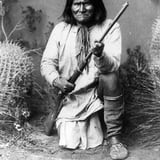 In 1906, Geronimo published his autobiography recounting the fascinating story of his life, from his years as a resistance fighter, to his capture and subsequent period of celebrity in which he appeared at the 1904 St Louis World Fair and met President Roosevelt. Edward Rielly, author of Legends of American Indian Resistance, tells of the tragic massacre which underpinned his life.
Accuracy and Elegance in Cheselden’s Osteographia (1733)
August 22, 2011
Books & Science & Art
In 1906, Geronimo published his autobiography recounting the fascinating story of his life, from his years as a resistance fighter, to his capture and subsequent period of celebrity in which he appeared at the 1904 St Louis World Fair and met President Roosevelt. Edward Rielly, author of Legends of American Indian Resistance, tells of the tragic massacre which underpinned his life.
Accuracy and Elegance in Cheselden’s Osteographia (1733)
August 22, 2011
Books & Science & Art
 With its novel vignettes and its use of a camera obscura in the production of the plates, William Cheselden’s Osteographia, is recognized as a landmark in the history of anatomical illustration. Monique Kornell looks at its unique blend of accuracy and elegance.
Labillardière and his Relation
August 15, 2011
Books & Art & History
With its novel vignettes and its use of a camera obscura in the production of the plates, William Cheselden’s Osteographia, is recognized as a landmark in the history of anatomical illustration. Monique Kornell looks at its unique blend of accuracy and elegance.
Labillardière and his Relation
August 15, 2011
Books & Art & History
 When the French explorer Lapérouse went missing, a search voyage was put together to retrace his course around the islands of Australasia. On the mission was the naturalist Jacques Labillardière who published a book in 1800 of his experiences. Edward Duyker, author of Citizen Labillardière: A Naturalist’s Life in Revolution and Exploration (1755-1834), explores the impact of his pioneering work.
American Kaleidoscope: Morton Prince and the Boston Revolution in Psychotherapy
August 5, 2011
Books & Science & Philosophy
When the French explorer Lapérouse went missing, a search voyage was put together to retrace his course around the islands of Australasia. On the mission was the naturalist Jacques Labillardière who published a book in 1800 of his experiences. Edward Duyker, author of Citizen Labillardière: A Naturalist’s Life in Revolution and Exploration (1755-1834), explores the impact of his pioneering work.
American Kaleidoscope: Morton Prince and the Boston Revolution in Psychotherapy
August 5, 2011
Books & Science & Philosophy
 In 1906 the American physician and neurologist Morton Henry Prince published his remarkable monograph The Dissociation of a Personality in which he details the condition of ‘Sally Beauchamp’, America’s first famous multiple-personality case. George Prochnik discusses the life and thought of the man Freud called “an unimaginable ass”.
John Muir’s Literary Science
June 9, 2011
Books & Literature & Science
In 1906 the American physician and neurologist Morton Henry Prince published his remarkable monograph The Dissociation of a Personality in which he details the condition of ‘Sally Beauchamp’, America’s first famous multiple-personality case. George Prochnik discusses the life and thought of the man Freud called “an unimaginable ass”.
John Muir’s Literary Science
June 9, 2011
Books & Literature & Science
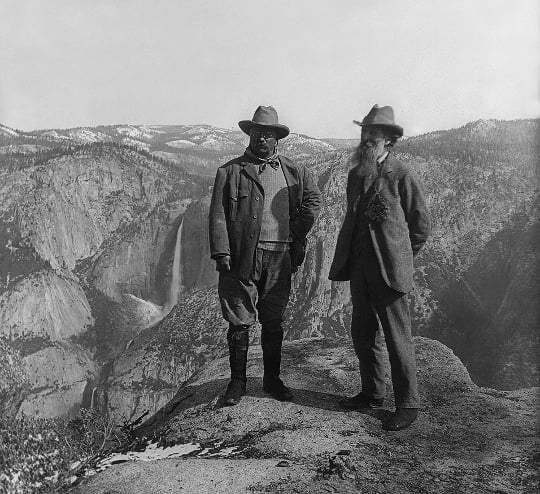 The writings of the Scottish-born American naturalist John Muir are known for their scientific acumen as well as for their rhapsodic flights. Terry Gifford, author of Reconnecting with John Muir, explores Muir’s multifaceted engagement with ‘God’s big show’.
Beatus of Liébana
April 18, 2011
Books & Art & Religion
The writings of the Scottish-born American naturalist John Muir are known for their scientific acumen as well as for their rhapsodic flights. Terry Gifford, author of Reconnecting with John Muir, explores Muir’s multifaceted engagement with ‘God’s big show’.
Beatus of Liébana
April 18, 2011
Books & Art & Religion
 In a monastery in the mountains of northern Spain, 700 years after the Book of Revelations was written, a monk set down to illustrate a collection of writings he had compiled about this most vivid and apocalyptic of the New Testament books. Throughout the next few centuries his depictions of multi-headed beasts, decapitated sinners, and trumpet blowing angels, would be copied over and over again in various versions of the manuscript. John Williams, author of The Illustrated Beatus, introduces Beatus of Liébana and his Commentary on the Apocalypse.
Bugs and Beasts Before the Law
March 27, 2011
Books & History & Religion
In a monastery in the mountains of northern Spain, 700 years after the Book of Revelations was written, a monk set down to illustrate a collection of writings he had compiled about this most vivid and apocalyptic of the New Testament books. Throughout the next few centuries his depictions of multi-headed beasts, decapitated sinners, and trumpet blowing angels, would be copied over and over again in various versions of the manuscript. John Williams, author of The Illustrated Beatus, introduces Beatus of Liébana and his Commentary on the Apocalypse.
Bugs and Beasts Before the Law
March 27, 2011
Books & History & Religion
 Murderous pigs sent to the gallows, sparrows prosecuted for chattering in church, a gang of thieving rats let off on a wholly technical acquittal – theoretical psychologist and author Nicholas Humphrey* explores the strange world of medieval animal trials.
100 Years of The Secret Garden
March 8, 2011
Books & Literature
Murderous pigs sent to the gallows, sparrows prosecuted for chattering in church, a gang of thieving rats let off on a wholly technical acquittal – theoretical psychologist and author Nicholas Humphrey* explores the strange world of medieval animal trials.
100 Years of The Secret Garden
March 8, 2011
Books & Literature
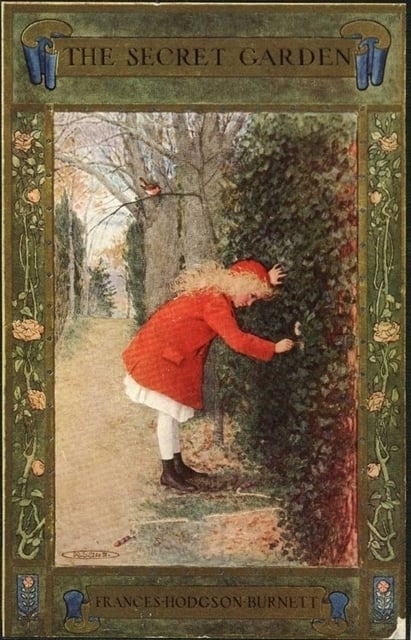 This year marks the 100th anniversary of the children’s classic The Secret Garden. Gretchen Holbrook Gerzina, author of Frances Hodgson Burnett: The Unexpected Life of the Author of The Secret Garden, takes a look at the life of Burnett and how personal tragedy underpinned the creation of her most famous work.
The Life and Work of Nehemiah Grew
March 1, 2011
Books & Science & Philosophy & Art & History
This year marks the 100th anniversary of the children’s classic The Secret Garden. Gretchen Holbrook Gerzina, author of Frances Hodgson Burnett: The Unexpected Life of the Author of The Secret Garden, takes a look at the life of Burnett and how personal tragedy underpinned the creation of her most famous work.
The Life and Work of Nehemiah Grew
March 1, 2011
Books & Science & Philosophy & Art & History
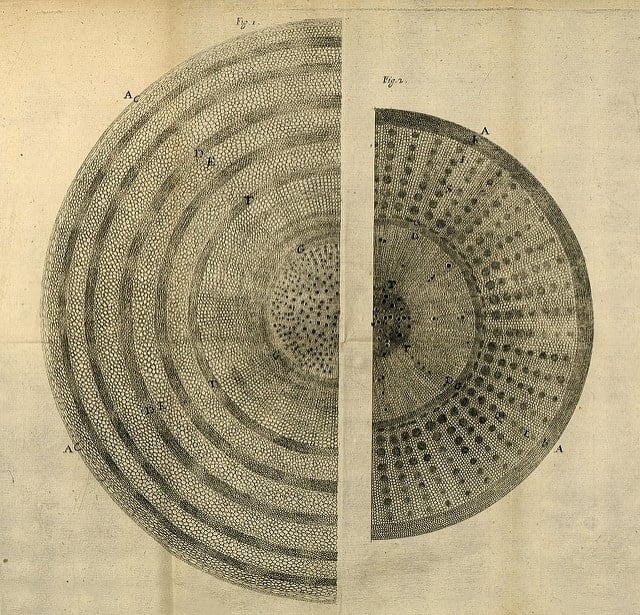 In the 82 illustrated plates included in his 1680 book The Anatomy of Plants, the English botanist Nehemiah Grew revealed for the first time the inner structure and function of plants in all their splendorous intricacy. Brian Garret explores how Grew’s pioneering “mechanist” vision in relation to the floral world paved the way for the science of plant anatomy.
Lewis Carroll and The Hunting of the Snark
February 22, 2011
Books & Poems & Literature & Art
In the 82 illustrated plates included in his 1680 book The Anatomy of Plants, the English botanist Nehemiah Grew revealed for the first time the inner structure and function of plants in all their splendorous intricacy. Brian Garret explores how Grew’s pioneering “mechanist” vision in relation to the floral world paved the way for the science of plant anatomy.
Lewis Carroll and The Hunting of the Snark
February 22, 2011
Books & Poems & Literature & Art
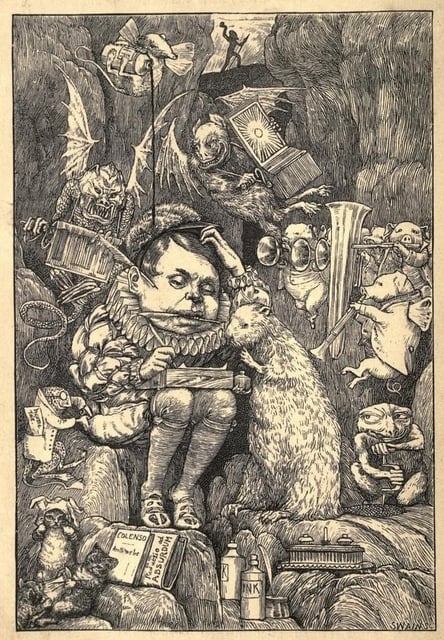 In 1876 Lewis Carroll published by far his longest poem – a fantastical epic tale recounting the adventures of a bizarre troupe of nine tradesmen and a beaver. Carrollian scholar, Edward Wakeling, introduces The Hunting of the Snark.
Tales from Tahiti
February 8, 2011
Books & Literature & History
In 1876 Lewis Carroll published by far his longest poem – a fantastical epic tale recounting the adventures of a bizarre troupe of nine tradesmen and a beaver. Carrollian scholar, Edward Wakeling, introduces The Hunting of the Snark.
Tales from Tahiti
February 8, 2011
Books & Literature & History
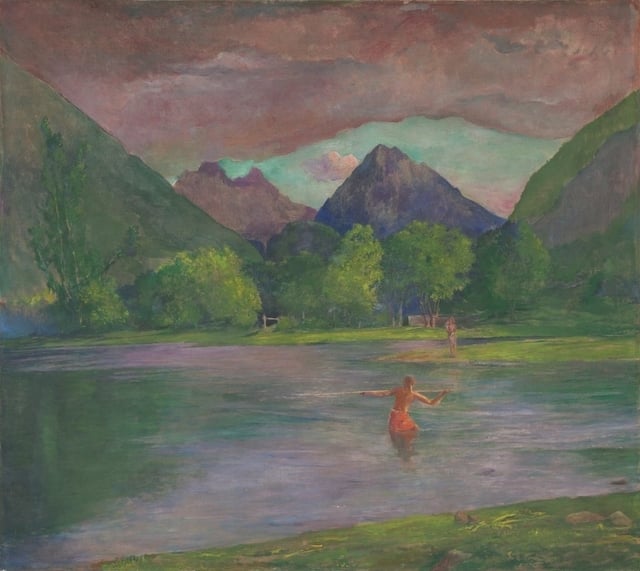 In 1890, Henry Adams – the historian, academic, journalist, and descendent of two US presidents – set out on a tour of the South Pacific. After befriending the family of “the last Queen of Tahiti,” he became inspired to write what is considered to be the first history of the island. Through Adams’ letters, Ray Davis explores the story of the book’s creation.
Emma Goldman’s “Anarchism Without Adjectives”
January 12, 2011
Books & Literature & Philosophy
In 1890, Henry Adams – the historian, academic, journalist, and descendent of two US presidents – set out on a tour of the South Pacific. After befriending the family of “the last Queen of Tahiti,” he became inspired to write what is considered to be the first history of the island. Through Adams’ letters, Ray Davis explores the story of the book’s creation.
Emma Goldman’s “Anarchism Without Adjectives”
January 12, 2011
Books & Literature & Philosophy
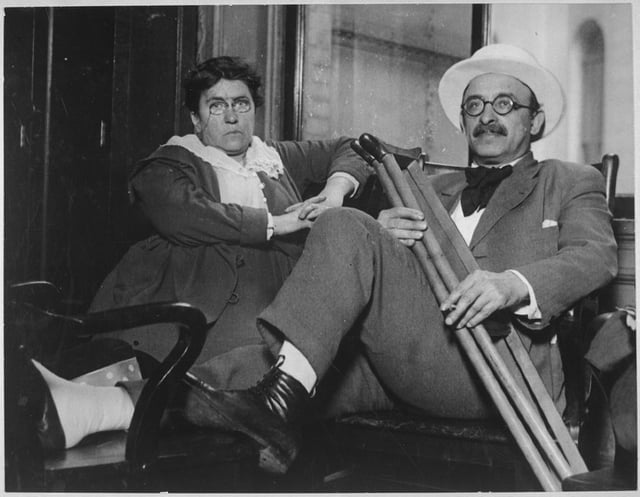 In 2011, over 100 years after the publication of her seminal Anarchism and Other Essays, the writings of Emma Goldman entered the public domain. Kathy E. Ferguson, Professor of Political Science and Women’s Studies at the University of Hawai’i, provides an introduction to Goldman’s life and her particular brand of anarchism.
In Hollywood with Nathanael West
January 1, 2011
Books & Literature
In 2011, over 100 years after the publication of her seminal Anarchism and Other Essays, the writings of Emma Goldman entered the public domain. Kathy E. Ferguson, Professor of Political Science and Women’s Studies at the University of Hawai’i, provides an introduction to Goldman’s life and her particular brand of anarchism.
In Hollywood with Nathanael West
January 1, 2011
Books & Literature
 Today the works of Nathanael West enter the public domain in many countries around the world. Marion Meade, author of Lonelyhearts, a new biography about West, takes a look at his life in Hollywood and the story behind his most famous work, The Day of the Locust.
Today the works of Nathanael West enter the public domain in many countries around the world. Marion Meade, author of Lonelyhearts, a new biography about West, takes a look at his life in Hollywood and the story behind his most famous work, The Day of the Locust.
 Benjamin Breen on the remarkable story of George Psalmanazar, the mysterious Frenchman who successfully posed as a native of Formosa (now modern Taiwan) and gave birth to a meticulously fabricated culture with bizarre customs, exotic fashions, and its own invented language.
Pens and Needles: Reviving Book-Embroidery in Victorian England
March 21, 2018
Books & Art
Benjamin Breen on the remarkable story of George Psalmanazar, the mysterious Frenchman who successfully posed as a native of Formosa (now modern Taiwan) and gave birth to a meticulously fabricated culture with bizarre customs, exotic fashions, and its own invented language.
Pens and Needles: Reviving Book-Embroidery in Victorian England
March 21, 2018
Books & Art
 Fashionable in the 16th and 17th century, the art of embroidering unique covers for books saw a comeback in late 19th-century England, from the middle-class drawing room to the Arts and Crafts movement. Jessica Roberson explores the bibliomania, patriotism, and issues around gender so central to the revival.
Defining the Demonic
October 25, 2017
Books & Art & Religion
Fashionable in the 16th and 17th century, the art of embroidering unique covers for books saw a comeback in late 19th-century England, from the middle-class drawing room to the Arts and Crafts movement. Jessica Roberson explores the bibliomania, patriotism, and issues around gender so central to the revival.
Defining the Demonic
October 25, 2017
Books & Art & Religion
 Although Jacques Collin de Plancy’s Dictionnaire infernal, a monumental compendium of all things diabolical, was first published in 1818 to much success, it is the fabulously illustrated final edition of 1863 which secured the book as a landmark in the study and representation of demons. Ed Simon explores the work and how at its heart lies an unlikely but pertinent synthesis of the Enlightenment and the occult.
Master of Disaster, Ignatius Donnelly
September 27, 2017
Books & Literature & Science & Religion
Although Jacques Collin de Plancy’s Dictionnaire infernal, a monumental compendium of all things diabolical, was first published in 1818 to much success, it is the fabulously illustrated final edition of 1863 which secured the book as a landmark in the study and representation of demons. Ed Simon explores the work and how at its heart lies an unlikely but pertinent synthesis of the Enlightenment and the occult.
Master of Disaster, Ignatius Donnelly
September 27, 2017
Books & Literature & Science & Religion
 The destruction of Atlantis, cataclysmic comets, and a Manhattan tower made entirely from concrete and corpse — Carl Abbott on the life and work of a Minnesotan writer, and failed politician, with a mind primed for catastrophe.
Rescuing England: The Rhetoric of Imperialism and the Salvation Army
August 16, 2017
Books & Religion
The destruction of Atlantis, cataclysmic comets, and a Manhattan tower made entirely from concrete and corpse — Carl Abbott on the life and work of a Minnesotan writer, and failed politician, with a mind primed for catastrophe.
Rescuing England: The Rhetoric of Imperialism and the Salvation Army
August 16, 2017
Books & Religion
 Ellen J. Stockstill on how William Booth, founder of the Salvation Army, placed the ideas and language of colonialism at the very heart of his vision for improving the lives of Victorian England’s poor.
Woodcuts and Witches
May 4, 2017
Books & Art & History & Religion
Ellen J. Stockstill on how William Booth, founder of the Salvation Army, placed the ideas and language of colonialism at the very heart of his vision for improving the lives of Victorian England’s poor.
Woodcuts and Witches
May 4, 2017
Books & Art & History & Religion
 Jon Crabb on the witch-craze of Early Modern Europe, and how the concurrent rise of the mass-produced woodcut helped forge the archetype of the broom-riding crone — complete with cauldron and cats — so familiar today.
George Washington: A Descendant of Odin?
February 8, 2017
Books & History & Religion
Jon Crabb on the witch-craze of Early Modern Europe, and how the concurrent rise of the mass-produced woodcut helped forge the archetype of the broom-riding crone — complete with cauldron and cats — so familiar today.
George Washington: A Descendant of Odin?
February 8, 2017
Books & History & Religion
 Yvonne Seale on a bizarre and fanciful piece of genealogical scholarship and what it tells us about identity in late 19th-century America.
Defoe and the Distance to Utopia
January 25, 2017
Books & Literature
Yvonne Seale on a bizarre and fanciful piece of genealogical scholarship and what it tells us about identity in late 19th-century America.
Defoe and the Distance to Utopia
January 25, 2017
Books & Literature
 In the wake of recent political shifts and the dystopian flavour they carry for many, J.H. Pearl looks to the works of Daniel Defoe and the lessons they can teach us about bringing utopia home.
Astral Travels with Jack London
November 22, 2016
Books & Literature
In the wake of recent political shifts and the dystopian flavour they carry for many, J.H. Pearl looks to the works of Daniel Defoe and the lessons they can teach us about bringing utopia home.
Astral Travels with Jack London
November 22, 2016
Books & Literature
 On the centenary of Jack London’s death, Benjamin Breen looks at the writer’s last book to be published in his lifetime, The Star Rover — a strange tale about solitary confinement and interstellar reincarnation, which speaks to us of the dreams and struggles of the man himself.
Richard Hakluyt and Early English Travel
October 26, 2016
Books & History
On the centenary of Jack London’s death, Benjamin Breen looks at the writer’s last book to be published in his lifetime, The Star Rover — a strange tale about solitary confinement and interstellar reincarnation, which speaks to us of the dreams and struggles of the man himself.
Richard Hakluyt and Early English Travel
October 26, 2016
Books & History
 The Principle Navigations, Richard Hakluyt’s great championing of Elizabethan colonial exploration, remains one of the most important collections of English travel writing ever published. As well as the escapades of famed names such as Francis Drake and Walter Raleigh, Nandini Das looks at how the book preserves many stories of lesser known figures that surely would have been otherwise lost.
Picturing Don Quixote
April 6, 2016
Books & Literature & Art
The Principle Navigations, Richard Hakluyt’s great championing of Elizabethan colonial exploration, remains one of the most important collections of English travel writing ever published. As well as the escapades of famed names such as Francis Drake and Walter Raleigh, Nandini Das looks at how the book preserves many stories of lesser known figures that surely would have been otherwise lost.
Picturing Don Quixote
April 6, 2016
Books & Literature & Art
 This year marks the 400th anniversary of the death of Miguel de Cervantes, author of one of the best-loved and most frequently illustrated books in the history of literature — Don Quixote. Rachel Schmidt explores how the varying approaches to illustrating the tale have reflected and impacted its reading through the centuries.
Divine Comedy: Lucian Versus The Gods
March 23, 2016
Books & Religion
This year marks the 400th anniversary of the death of Miguel de Cervantes, author of one of the best-loved and most frequently illustrated books in the history of literature — Don Quixote. Rachel Schmidt explores how the varying approaches to illustrating the tale have reflected and impacted its reading through the centuries.
Divine Comedy: Lucian Versus The Gods
March 23, 2016
Books & Religion
 With the twenty-six short comic dialogues that made up Dialogues of the Gods, the 2nd-century writer Lucian of Samosata took the popular images of the Greek gods and redrew them as greedy, sex-obsessed, power-mad despots. Nicholas Jeeves, editor of a new edition for PDR Press, explores the story behind the work and its reception in the English-speaking world.
Robert Greene, the First Bohemian
January 27, 2016
Books & Literature & Drama
With the twenty-six short comic dialogues that made up Dialogues of the Gods, the 2nd-century writer Lucian of Samosata took the popular images of the Greek gods and redrew them as greedy, sex-obsessed, power-mad despots. Nicholas Jeeves, editor of a new edition for PDR Press, explores the story behind the work and its reception in the English-speaking world.
Robert Greene, the First Bohemian
January 27, 2016
Books & Literature & Drama
 Known for his debauched lifestyle, his flirtations with criminality, and the sheer volume of his output, the Elizabethan writer Robert Greene was a fascinating figure. Ed Simon explores the literary merits and bohemian traits of the man who penned the earliest known (and far from flattering) reference to Shakespeare as a playwright.
On Oscar Wilde and Plagiarism
January 13, 2016
Books & Poems & Art
Known for his debauched lifestyle, his flirtations with criminality, and the sheer volume of his output, the Elizabethan writer Robert Greene was a fascinating figure. Ed Simon explores the literary merits and bohemian traits of the man who penned the earliest known (and far from flattering) reference to Shakespeare as a playwright.
On Oscar Wilde and Plagiarism
January 13, 2016
Books & Poems & Art
 Celebrated for his innovative wit, Oscar Wilde and the notion of originality are common bedfellows. The pairing, however, is not without its complications. Joseph Bristow and Rebecca N. Mitchell explore the claims of plagiarism that dogged Wilde’s career, particularly as regards his relationship with that other great figure of late-19th-century Decadence, the American painter James McNeill Whistler.
The Science of Life and Death in Mary Shelley’s Frankenstein
November 25, 2015
Books & Science
Professor Sharon Ruston surveys the scientific background to Mary Shelley’s Frankenstein, considering contemporary investigations into resuscitation, galvanism, and the possibility of states between life and death.
Notes on the Fourth Dimension
October 28, 2015
Books & Science & Philosophy
Celebrated for his innovative wit, Oscar Wilde and the notion of originality are common bedfellows. The pairing, however, is not without its complications. Joseph Bristow and Rebecca N. Mitchell explore the claims of plagiarism that dogged Wilde’s career, particularly as regards his relationship with that other great figure of late-19th-century Decadence, the American painter James McNeill Whistler.
The Science of Life and Death in Mary Shelley’s Frankenstein
November 25, 2015
Books & Science
Professor Sharon Ruston surveys the scientific background to Mary Shelley’s Frankenstein, considering contemporary investigations into resuscitation, galvanism, and the possibility of states between life and death.
Notes on the Fourth Dimension
October 28, 2015
Books & Science & Philosophy
 Hyperspace, ghosts, and colourful cubes — Jon Crabb on the work of Charles Howard Hinton and the cultural history of higher dimensions.
Bad Air: Pollution, Sin, and Science Fiction in William Delisle Hay’s The Doom of the Great City (1880)
September 30, 2015
Books & Literature & Science
Hyperspace, ghosts, and colourful cubes — Jon Crabb on the work of Charles Howard Hinton and the cultural history of higher dimensions.
Bad Air: Pollution, Sin, and Science Fiction in William Delisle Hay’s The Doom of the Great City (1880)
September 30, 2015
Books & Literature & Science
 Deadly fogs, moralistic diatribes, debunked medical theory — Brett Beasley explores a piece of Victorian science fiction considered to be the first modern tale of urban apocalypse.
Tribal Life in Old Lyme: Canada’s Colorblind Chronicler and his Connecticut Exile
September 2, 2015
Books & Painting & Art
Abigail Walthausen explores the life and work of Arthur Heming, the Canadian painter who — having been diagnosed with colourblindness as a child — worked for most of his life in a distinctive palette of black, yellow, and white.
When the Birds and the Bees Were Not Enough: Aristotle’s Masterpiece
August 19, 2015
Books & Science
Mary Fissell on how a wildly popular sex manual — first published in 17th-century London and reprinted in hundreds of subsequent editions — both taught and titillated through the early modern period and beyond.
The Mystery of Lewis Carroll
July 1, 2015
Books
Deadly fogs, moralistic diatribes, debunked medical theory — Brett Beasley explores a piece of Victorian science fiction considered to be the first modern tale of urban apocalypse.
Tribal Life in Old Lyme: Canada’s Colorblind Chronicler and his Connecticut Exile
September 2, 2015
Books & Painting & Art
Abigail Walthausen explores the life and work of Arthur Heming, the Canadian painter who — having been diagnosed with colourblindness as a child — worked for most of his life in a distinctive palette of black, yellow, and white.
When the Birds and the Bees Were Not Enough: Aristotle’s Masterpiece
August 19, 2015
Books & Science
Mary Fissell on how a wildly popular sex manual — first published in 17th-century London and reprinted in hundreds of subsequent editions — both taught and titillated through the early modern period and beyond.
The Mystery of Lewis Carroll
July 1, 2015
Books
 The author of Alice’s Adventures in Wonderland, which sees its 150th anniversary this year, remains to this day an enigmatic figure. Jenny Woolf explores the joys and struggles of this brilliant, secretive, and complex man, creator of one of the world’s best-loved stories.
A Bestiary of Sir Thomas Browne
June 17, 2015
Books & Religion
The author of Alice’s Adventures in Wonderland, which sees its 150th anniversary this year, remains to this day an enigmatic figure. Jenny Woolf explores the joys and struggles of this brilliant, secretive, and complex man, creator of one of the world’s best-loved stories.
A Bestiary of Sir Thomas Browne
June 17, 2015
Books & Religion
 Hugh Aldersey-Williams takes a tour through Thomas Browne’s Pseudodoxia Epidemica, a work which sees one of the 17th-century’s greatest writers stylishly debunk all manner of myths, in particular those relating to the world of animals.
The Nightwalker and the Nocturnal Picaresque
June 3, 2015
Books & Literature
Hugh Aldersey-Williams takes a tour through Thomas Browne’s Pseudodoxia Epidemica, a work which sees one of the 17th-century’s greatest writers stylishly debunk all manner of myths, in particular those relating to the world of animals.
The Nightwalker and the Nocturnal Picaresque
June 3, 2015
Books & Literature
 The introduction of street lighting to 17th-century London saw an explosion of nocturnal activity in the capital, most of revolving around the selling of sex. Matthew Beaumont explores how some writers, with the intention of condemning these nefarious goings-on, took to the city’s streets after dark, and in the process gave birth to a peculiar new literary genre.
Black on Black
April 9, 2015
Books & Painting & Science & Philosophy
The introduction of street lighting to 17th-century London saw an explosion of nocturnal activity in the capital, most of revolving around the selling of sex. Matthew Beaumont explores how some writers, with the intention of condemning these nefarious goings-on, took to the city’s streets after dark, and in the process gave birth to a peculiar new literary genre.
Black on Black
April 9, 2015
Books & Painting & Science & Philosophy
 Should we consider black a colour, the absence of colour, or a suspension of vision produced by a deprivation of light? Beginning with Robert Fludd’s attempt to picture nothingness, Eugene Thacker reflects* on some of the ways in which blackness has been used and thought about through the history of art and philosophical thought.
Sex and Science in Robert Thornton’s Temple of Flora
March 11, 2015
Books & Poems & Painting & Science & Art
Should we consider black a colour, the absence of colour, or a suspension of vision produced by a deprivation of light? Beginning with Robert Fludd’s attempt to picture nothingness, Eugene Thacker reflects* on some of the ways in which blackness has been used and thought about through the history of art and philosophical thought.
Sex and Science in Robert Thornton’s Temple of Flora
March 11, 2015
Books & Poems & Painting & Science & Art
 Bridal beds, blushing captives, and swollen trunks – Carl Linnaeus’ taxonomy of plants heralded a whole new era in 18th-century Europe of plants being spoken of in sexualised terms. Martin Kemp explores* how this association between the floral and erotic reached its visual zenith in Robert Thornton’s exquisitely illustrated Temple of Flora.
The Eternal Guffaw: John Leech and The Comic History of Rome
February 25, 2015
Books & Art
At the beginning of the 1850s, two stalwarts from the heart of London-based satirical magazine Punch, Gilbert Abbott à Beckett and John Leech, cast their mocking eye a little further back in time and published The Comic History of Rome. Caroline Wazer explores how it is not in the text but rather in Leech’s delightfully anachronistic illustrations that the book’s true subversion lies, offering as they do a critique of Victorian society itself.
Neanderthals in 3D: L’Homme de La Chapelle
February 11, 2015
Books & Photography & Science
Bridal beds, blushing captives, and swollen trunks – Carl Linnaeus’ taxonomy of plants heralded a whole new era in 18th-century Europe of plants being spoken of in sexualised terms. Martin Kemp explores* how this association between the floral and erotic reached its visual zenith in Robert Thornton’s exquisitely illustrated Temple of Flora.
The Eternal Guffaw: John Leech and The Comic History of Rome
February 25, 2015
Books & Art
At the beginning of the 1850s, two stalwarts from the heart of London-based satirical magazine Punch, Gilbert Abbott à Beckett and John Leech, cast their mocking eye a little further back in time and published The Comic History of Rome. Caroline Wazer explores how it is not in the text but rather in Leech’s delightfully anachronistic illustrations that the book’s true subversion lies, offering as they do a critique of Victorian society itself.
Neanderthals in 3D: L’Homme de La Chapelle
February 11, 2015
Books & Photography & Science
 More than just a favourite of Victorian home entertainment, the stereoscope and the 3D images it created were also used in the field of science. Lydia Pyne explores how the French palaeontologist Marcellin Boule utilised the device in his groundbreaking monograph analysing one of the early-20th-century’s most significant archaeological discoveries – the Neanderthal skeleton of La Chapelle.
The Poet, the Physician and the Birth of the Modern Vampire
October 16, 2014
Books & Literature & Religion
From that famed night of ghost-stories in a Lake Geneva villa in 1816, as well as Frankenstein’s monster, there arose that other great figure of 19th-century gothic fiction – the vampire – a creation of Lord Byron’s personal physician John Polidori. Andrew McConnell Stott explores how a fractious relationship between Polidori and his poet employer lies behind the tale, with Byron himself providing a model for the blood-sucking aristocratic figure of the legend we are familiar with today.
Ghostwriter and Ghost: The Strange Case of Pearl Curran & Patience Worth
September 17, 2014
Books & Poems & Literature & Religion
In early 20th-century St. Louis, Pearl Curran claimed to have conjured a long-dead New England puritan named Patience Worth through a Ouija board. Although mostly unknown today, the resulting books, poems, and plays that Worth “dictated” to Curran earned great praise at the time. Ed Simon investigates the curious and nearly forgotten literary fruits of a “ghost” and her ghostwriter.
The Tale of Beatrix Potter
July 23, 2014
Books & Art
More than just a favourite of Victorian home entertainment, the stereoscope and the 3D images it created were also used in the field of science. Lydia Pyne explores how the French palaeontologist Marcellin Boule utilised the device in his groundbreaking monograph analysing one of the early-20th-century’s most significant archaeological discoveries – the Neanderthal skeleton of La Chapelle.
The Poet, the Physician and the Birth of the Modern Vampire
October 16, 2014
Books & Literature & Religion
From that famed night of ghost-stories in a Lake Geneva villa in 1816, as well as Frankenstein’s monster, there arose that other great figure of 19th-century gothic fiction – the vampire – a creation of Lord Byron’s personal physician John Polidori. Andrew McConnell Stott explores how a fractious relationship between Polidori and his poet employer lies behind the tale, with Byron himself providing a model for the blood-sucking aristocratic figure of the legend we are familiar with today.
Ghostwriter and Ghost: The Strange Case of Pearl Curran & Patience Worth
September 17, 2014
Books & Poems & Literature & Religion
In early 20th-century St. Louis, Pearl Curran claimed to have conjured a long-dead New England puritan named Patience Worth through a Ouija board. Although mostly unknown today, the resulting books, poems, and plays that Worth “dictated” to Curran earned great praise at the time. Ed Simon investigates the curious and nearly forgotten literary fruits of a “ghost” and her ghostwriter.
The Tale of Beatrix Potter
July 23, 2014
Books & Art
 This year, the works of one of the most successful and universal writers of all time came into the public domain in many countries around the world. The Tale of Peter Rabbit, The Tale of Squirrel Nutkin, The Tale of Benjamin Bunny, The Tale of Jemima Puddle-Duck – in all, thirty-three books bearing the name “Beatrix Potter” have sold close to 200 million copies. Frank Delaney enquires into the more complex woman behind the safe and warm-hearted stories.
Moonblight and Six Feet of Romance: Dan Carter Beard’s Foray into Fiction
June 11, 2014
Books & Literature & Art
This year, the works of one of the most successful and universal writers of all time came into the public domain in many countries around the world. The Tale of Peter Rabbit, The Tale of Squirrel Nutkin, The Tale of Benjamin Bunny, The Tale of Jemima Puddle-Duck – in all, thirty-three books bearing the name “Beatrix Potter” have sold close to 200 million copies. Frank Delaney enquires into the more complex woman behind the safe and warm-hearted stories.
Moonblight and Six Feet of Romance: Dan Carter Beard’s Foray into Fiction
June 11, 2014
Books & Literature & Art
 An esoteric disease which reveals things in their true light; three pairs of disembodied feet galavanting about the countryside – Abigail Walthausen explores the brief but strange literary career of Daniel Carter Beard, illustrator for Mark Twain and a founding father of the Boy Scouts of America.
In the Image of God: John Comenius and the First Children’s Picture Book
May 14, 2014
Books & Religion
In the mid 17th-century John Comenius published what many consider to be the first picture book dedicated to the education of young children, Orbis Sensualium Pictus – or The World of Things Obvious to the Senses drawn in Pictures, as it was rendered in English. Charles McNamara explores how, contrary to Comenius’ assertions, the book can be seen to be as much about the invisible world as the visible.
1592: Coining Columbus
April 16, 2014
Books & Art & History
An esoteric disease which reveals things in their true light; three pairs of disembodied feet galavanting about the countryside – Abigail Walthausen explores the brief but strange literary career of Daniel Carter Beard, illustrator for Mark Twain and a founding father of the Boy Scouts of America.
In the Image of God: John Comenius and the First Children’s Picture Book
May 14, 2014
Books & Religion
In the mid 17th-century John Comenius published what many consider to be the first picture book dedicated to the education of young children, Orbis Sensualium Pictus – or The World of Things Obvious to the Senses drawn in Pictures, as it was rendered in English. Charles McNamara explores how, contrary to Comenius’ assertions, the book can be seen to be as much about the invisible world as the visible.
1592: Coining Columbus
April 16, 2014
Books & Art & History
 For many, the arrival of Christopher Columbus in the Americas is inextricably linked to a particular image: a small group of confident men on a tropical beach formally announcing their presence to the dumbfounded Amerindians. Michiel van Groesen explores the origins of this Eurocentric iconography and ascribes its persistence to the editorial strategy of the publisher who invented the initial design, a full century after Columbus’ encounter.
Victorian Occultism and the Art of Synesthesia
March 19, 2014
Books & Painting & Philosophy & Art
Grounded in the theory that ideas, emotions, and even events, can manifest as visible auras, Annie Besant and Charles Leadbeater’s Thought-Forms (1901) is an odd and intriguing work. Benjamin Breen explores these “synesthetic” abstractions and asks to what extent they, and the Victorian mysticism of which they were born, influenced the Modernist movement that flourished in the following decades.
Encounter at the Crossroads of Europe — the Fellowship of Zweig and Verhaeren
December 11, 2013
Books & Literature & History
Stefan Zweig, whose works passed into the public domain this year in many countries around the world, was one of the most famous writers of the 1920s and 30s. Will Stone explores the importance of the Austrian’s early friendship with the oft overlooked Belgian poet Emile Verhaeren.
Lost in Translation: Proust and Scott Moncrieff
November 13, 2013
Books & Literature
Scott Moncrieff’s English translation of Proust’s A la recherche du temps perdu is widely hailed as a masterpiece in its own right. His rendering of the title as Remembrance of Things Past is not, however, considered a high point. William C. Carter explores the two men’s correspondence on this somewhat sticky issue and how the Shakespearean title missed the mark regarding Proust’s theory of memory.
Elizabeth Bisland’s Race Around the World
October 16, 2013
Books & Literature & History & Events
For many, the arrival of Christopher Columbus in the Americas is inextricably linked to a particular image: a small group of confident men on a tropical beach formally announcing their presence to the dumbfounded Amerindians. Michiel van Groesen explores the origins of this Eurocentric iconography and ascribes its persistence to the editorial strategy of the publisher who invented the initial design, a full century after Columbus’ encounter.
Victorian Occultism and the Art of Synesthesia
March 19, 2014
Books & Painting & Philosophy & Art
Grounded in the theory that ideas, emotions, and even events, can manifest as visible auras, Annie Besant and Charles Leadbeater’s Thought-Forms (1901) is an odd and intriguing work. Benjamin Breen explores these “synesthetic” abstractions and asks to what extent they, and the Victorian mysticism of which they were born, influenced the Modernist movement that flourished in the following decades.
Encounter at the Crossroads of Europe — the Fellowship of Zweig and Verhaeren
December 11, 2013
Books & Literature & History
Stefan Zweig, whose works passed into the public domain this year in many countries around the world, was one of the most famous writers of the 1920s and 30s. Will Stone explores the importance of the Austrian’s early friendship with the oft overlooked Belgian poet Emile Verhaeren.
Lost in Translation: Proust and Scott Moncrieff
November 13, 2013
Books & Literature
Scott Moncrieff’s English translation of Proust’s A la recherche du temps perdu is widely hailed as a masterpiece in its own right. His rendering of the title as Remembrance of Things Past is not, however, considered a high point. William C. Carter explores the two men’s correspondence on this somewhat sticky issue and how the Shakespearean title missed the mark regarding Proust’s theory of memory.
Elizabeth Bisland’s Race Around the World
October 16, 2013
Books & Literature & History & Events
 Matthew Goodman explores the life and writings of Elizabeth Bisland, an American journalist propelled into the limelight when she set out in 1889 – head-to-head with fellow journalist Nellie Bly – on a journey to beat Phileas Fogg’s fictitious 80-day circumnavigation of the globe.
The Lost World of the London Coffeehouse
August 7, 2013
Books & History
In contrast to today’s rather mundane spawn of coffeehouse chains, the London of the 17th and 18th century was home to an eclectic and thriving coffee drinking scene. Dr Matthew Green explores the halcyon days of the London coffeehouse, a haven for caffeine-fueled debate and innovation which helped to shape the modern world.
Robert Baden-Powell’s Entomological Intrigues
July 10, 2013
Books
In 1915 Robert Baden-Powell, founder of the worldwide Scouts movement, published his DIY guide to espionage, My Adventures as a Spy. Mark Kaufman explores how the book’s ideas to utilise such natural objects as butterflies, moths and leaves, worked to mythologize British resourcefulness and promote a certain ‘weaponization of the pastoral’.
Lucian’s Trips to the Moon
June 26, 2013
Books & Literature & Philosophy
Matthew Goodman explores the life and writings of Elizabeth Bisland, an American journalist propelled into the limelight when she set out in 1889 – head-to-head with fellow journalist Nellie Bly – on a journey to beat Phileas Fogg’s fictitious 80-day circumnavigation of the globe.
The Lost World of the London Coffeehouse
August 7, 2013
Books & History
In contrast to today’s rather mundane spawn of coffeehouse chains, the London of the 17th and 18th century was home to an eclectic and thriving coffee drinking scene. Dr Matthew Green explores the halcyon days of the London coffeehouse, a haven for caffeine-fueled debate and innovation which helped to shape the modern world.
Robert Baden-Powell’s Entomological Intrigues
July 10, 2013
Books
In 1915 Robert Baden-Powell, founder of the worldwide Scouts movement, published his DIY guide to espionage, My Adventures as a Spy. Mark Kaufman explores how the book’s ideas to utilise such natural objects as butterflies, moths and leaves, worked to mythologize British resourcefulness and promote a certain ‘weaponization of the pastoral’.
Lucian’s Trips to the Moon
June 26, 2013
Books & Literature & Philosophy
 With his Vera Historia, the 2nd century satirist Lucian of Samosata wrote the first detailed account of a trip to the moon in the Western tradition and, some argue, also one of the earliest science fiction narratives. Aaron Parrett explores how Lucian used this lunar vantage point to take a satirical look back at the philosophers of Earth and their ideas of “truth”.
Sir Arthur and the Fairies
June 12, 2013
Books & Photography & History & Religion & Events
With his Vera Historia, the 2nd century satirist Lucian of Samosata wrote the first detailed account of a trip to the moon in the Western tradition and, some argue, also one of the earliest science fiction narratives. Aaron Parrett explores how Lucian used this lunar vantage point to take a satirical look back at the philosophers of Earth and their ideas of “truth”.
Sir Arthur and the Fairies
June 12, 2013
Books & Photography & History & Religion & Events
 In the spring of 1920, at the beginning of a growing fascination with spiritualism brought on by the death of his son and brother in WWI, Arthur Conan Doyle took up the case of the Cottingley Fairies. Mary Losure explores how the creator of Sherlock Holmes became convinced that the ‘fairy photographs’ taken by two girls from Yorkshire were real.
Mother Goose’s French Birth (1697) and British Afterlife (1729)
May 29, 2013
Books & Literature
Christine Jones explores the early English translations of Charles Perrault’s 1697 collection of fairy tales and how a change in running order was key to them becoming the stories for children which we know today.
Athanasius Kircher and the Hieroglyphic Sphinx
May 16, 2013
Books & Art & History & Religion
More than 170 years before Jean-François Champollion had the first real success in translating Egyptian hieroglyphs, the 17th century Jesuit scholar Athanasius Kircher was convinced he had cracked it. He was very wrong. Daniel Stolzenberg looks at Kircher’s Egyptian Oedipus, a book that has been called “one of the most learned monstrosities of all times.”
As a Lute out of Tune: Robert Burton’s Melancholy
May 1, 2013
Books & Science & Philosophy
In 1621 Robert Burton first published his masterpiece The Anatomy of Melancholy, a vast feat of scholarship examining in encyclopaedic detail that most enigmatic of maladies. Noga Arikha explores the book, said to be the favorite of both Samuel Johnson and Keats, and places it within the context of the humoural theory so popular at the time.
Vesalius and the Body Metaphor
April 18, 2013
Books & Science & History
In the spring of 1920, at the beginning of a growing fascination with spiritualism brought on by the death of his son and brother in WWI, Arthur Conan Doyle took up the case of the Cottingley Fairies. Mary Losure explores how the creator of Sherlock Holmes became convinced that the ‘fairy photographs’ taken by two girls from Yorkshire were real.
Mother Goose’s French Birth (1697) and British Afterlife (1729)
May 29, 2013
Books & Literature
Christine Jones explores the early English translations of Charles Perrault’s 1697 collection of fairy tales and how a change in running order was key to them becoming the stories for children which we know today.
Athanasius Kircher and the Hieroglyphic Sphinx
May 16, 2013
Books & Art & History & Religion
More than 170 years before Jean-François Champollion had the first real success in translating Egyptian hieroglyphs, the 17th century Jesuit scholar Athanasius Kircher was convinced he had cracked it. He was very wrong. Daniel Stolzenberg looks at Kircher’s Egyptian Oedipus, a book that has been called “one of the most learned monstrosities of all times.”
As a Lute out of Tune: Robert Burton’s Melancholy
May 1, 2013
Books & Science & Philosophy
In 1621 Robert Burton first published his masterpiece The Anatomy of Melancholy, a vast feat of scholarship examining in encyclopaedic detail that most enigmatic of maladies. Noga Arikha explores the book, said to be the favorite of both Samuel Johnson and Keats, and places it within the context of the humoural theory so popular at the time.
Vesalius and the Body Metaphor
April 18, 2013
Books & Science & History
 City streets, a winepress, pulleys, spinning tops, a ray fish, curdled milk: just a few of the many images used by 16th century anatomist Andreas Vesalius to explain the workings of the human body in his seminal work De Humani Corporis Fabrica. Marri Lynn explores.
The Redemption of Saint Anthony
March 7, 2013
Books & Art & Religion
City streets, a winepress, pulleys, spinning tops, a ray fish, curdled milk: just a few of the many images used by 16th century anatomist Andreas Vesalius to explain the workings of the human body in his seminal work De Humani Corporis Fabrica. Marri Lynn explores.
The Redemption of Saint Anthony
March 7, 2013
Books & Art & Religion
 Gustave Flaubert, best known for his masterpiece Madame Bovary, spent nearly thirty years working on a surreal and largely ‘unreadable’ retelling of the temptation of Saint Anthony. Colin Dickey explores how it was only in the dark and compelling illustrations of Odilon Redon, made years later, that Flaubert’s strangest work finally came to life.
The Curious World of Isaac D’Israeli
February 6, 2013
Books & Literature & History
Marvin Spevack introduces the Curiosities of Literature, the epic cornucopia of essays on all things literary by Isaac D’Israeli: a scholar, man of letters and father of British Prime Minister Benjamin Disraeli.
Simple Songs: Virginia Woolf and Music
January 9, 2013
Books & Music & Literature
Last year saw the works of Virginia Woolf enter the public domain in many countries around the world. To celebrate Emma Sutton looks at Woolf’s short story “A Simple Melody” and the influence which music had upon the writer who once wrote that music was “nearest to truth”.
The Forgotten Tales of the Brothers Grimm
December 20, 2012
Books & Literature & History
To mark the 200th year since the Brothers Grimm first published their Kinder-und Hausmärchen, Jack Zipes explores the importance of this neglected first edition and what it tells us about the motives and passions of the two folklorist brothers.
Henry Morton Stanley and the Pygmies of “Darkest Africa”
November 29, 2012
Books & History
After returning from his disastrous mission to central Africa to rescue a German colonial governor, the explorer Henry Morton Stanley was eager to distract from accusations of brutality with his ‘discovery’ of African pygmies. Brian Murray explores how after Stanley’s trip the African pygmy, in the form of stereotype and allegory, made its way into late Victorian society.
The Strangely Troubled Life of Digby Mackworth Dolben
November 14, 2012
Books & Poems & Literature
In 1911 the soon-to-be poet laureate Robert Bridges published the poems of Digby Mackworth Dolben, a school friend who had drowned to death at the age of 19 almost half a century earlier. Carl Miller looks at Bridges’ lengthy introduction in which he tells of the short and tragic life of the boy with whom fellow poet Gerard Manley Hopkins was reportedly besotted.
Athanasius, Underground
November 1, 2012
Books & Science & Art & History
Gustave Flaubert, best known for his masterpiece Madame Bovary, spent nearly thirty years working on a surreal and largely ‘unreadable’ retelling of the temptation of Saint Anthony. Colin Dickey explores how it was only in the dark and compelling illustrations of Odilon Redon, made years later, that Flaubert’s strangest work finally came to life.
The Curious World of Isaac D’Israeli
February 6, 2013
Books & Literature & History
Marvin Spevack introduces the Curiosities of Literature, the epic cornucopia of essays on all things literary by Isaac D’Israeli: a scholar, man of letters and father of British Prime Minister Benjamin Disraeli.
Simple Songs: Virginia Woolf and Music
January 9, 2013
Books & Music & Literature
Last year saw the works of Virginia Woolf enter the public domain in many countries around the world. To celebrate Emma Sutton looks at Woolf’s short story “A Simple Melody” and the influence which music had upon the writer who once wrote that music was “nearest to truth”.
The Forgotten Tales of the Brothers Grimm
December 20, 2012
Books & Literature & History
To mark the 200th year since the Brothers Grimm first published their Kinder-und Hausmärchen, Jack Zipes explores the importance of this neglected first edition and what it tells us about the motives and passions of the two folklorist brothers.
Henry Morton Stanley and the Pygmies of “Darkest Africa”
November 29, 2012
Books & History
After returning from his disastrous mission to central Africa to rescue a German colonial governor, the explorer Henry Morton Stanley was eager to distract from accusations of brutality with his ‘discovery’ of African pygmies. Brian Murray explores how after Stanley’s trip the African pygmy, in the form of stereotype and allegory, made its way into late Victorian society.
The Strangely Troubled Life of Digby Mackworth Dolben
November 14, 2012
Books & Poems & Literature
In 1911 the soon-to-be poet laureate Robert Bridges published the poems of Digby Mackworth Dolben, a school friend who had drowned to death at the age of 19 almost half a century earlier. Carl Miller looks at Bridges’ lengthy introduction in which he tells of the short and tragic life of the boy with whom fellow poet Gerard Manley Hopkins was reportedly besotted.
Athanasius, Underground
November 1, 2012
Books & Science & Art & History
 With his enormous range of scholarly pursuits the 17th-century polymath Athanasius Kircher has been hailed as the last Renaissance man and “the master of hundred arts”. John Glassie looks at one of Kircher’s great masterworks Mundus Subterraneus and how it was inspired by a subterranean adventure Kircher himself made into the bowl of Vesuvius.
Trüth, Beaüty, and Volapük
October 17, 2012
Books & Philosophy & History
With his enormous range of scholarly pursuits the 17th-century polymath Athanasius Kircher has been hailed as the last Renaissance man and “the master of hundred arts”. John Glassie looks at one of Kircher’s great masterworks Mundus Subterraneus and how it was inspired by a subterranean adventure Kircher himself made into the bowl of Vesuvius.
Trüth, Beaüty, and Volapük
October 17, 2012
Books & Philosophy & History
 Arika Okrent explores the rise and fall of Volapük – a universal language created in the late 19th century by a German priest called Johann Schleyer.
The Implacability of Things
October 3, 2012
Books & Literature
Arika Okrent explores the rise and fall of Volapük – a universal language created in the late 19th century by a German priest called Johann Schleyer.
The Implacability of Things
October 3, 2012
Books & Literature
 Jonathan Lamb explores the genre of ‘it-narratives’ – stories told from the point of view of an object, often as it travels in circulation through human hands.
The Last Great Explorer: William F. Warren and the Search for Eden
September 6, 2012
Books & Science & Philosophy & Religion
Of all the attempts throughout history to geographically locate the Garden of Eden one of the most compelling was that set out by minister and president of Boston University, William F. Warren. Brook Wilensky-Lanford looks at the ideas of the man who, in his book Paradise Found, proposed the home of all humanity to be at the North Pole.
The Lancashire Witches 1612-2012
August 22, 2012
Books & History
Not long after ten Lancashire residents were found guilty of witchcraft and hanged in August 1612, the official proceedings of the trial were published by the clerk of the court Thomas Potts in his The Wonderfull Discoverie of Witches in the Countie of Lancaster. Four hundred years on, Robert Poole reflects on England’s biggest witch trial and how it still has relevance today.
The Polyglot of Bologna
June 26, 2012
Books & History
Jonathan Lamb explores the genre of ‘it-narratives’ – stories told from the point of view of an object, often as it travels in circulation through human hands.
The Last Great Explorer: William F. Warren and the Search for Eden
September 6, 2012
Books & Science & Philosophy & Religion
Of all the attempts throughout history to geographically locate the Garden of Eden one of the most compelling was that set out by minister and president of Boston University, William F. Warren. Brook Wilensky-Lanford looks at the ideas of the man who, in his book Paradise Found, proposed the home of all humanity to be at the North Pole.
The Lancashire Witches 1612-2012
August 22, 2012
Books & History
Not long after ten Lancashire residents were found guilty of witchcraft and hanged in August 1612, the official proceedings of the trial were published by the clerk of the court Thomas Potts in his The Wonderfull Discoverie of Witches in the Countie of Lancaster. Four hundred years on, Robert Poole reflects on England’s biggest witch trial and how it still has relevance today.
The Polyglot of Bologna
June 26, 2012
Books & History
 Michael Erard takes a look at The Life of Cardinal Mezzofanti, a book exploring the extraordinary talent of the 19th century Italian cardinal who was reported to be able to speak over seventy languages.
Seeing Joyce
June 12, 2012
Books & Painting & Literature
Michael Erard takes a look at The Life of Cardinal Mezzofanti, a book exploring the extraordinary talent of the 19th century Italian cardinal who was reported to be able to speak over seventy languages.
Seeing Joyce
June 12, 2012
Books & Painting & Literature
 This year’s ‘Bloomsday’ – 108 years after Leopold Bloom took his legendary walk around Dublin on the 16th June 1904 – is the first since the works of James Joyce entered the public domain. Frank Delaney asks whether we should perhaps now stop trying to read Joyce and instead make visits to him as to a gallery.
Lost Libraries
February 20, 2012
Books & Literature & History
This year’s ‘Bloomsday’ – 108 years after Leopold Bloom took his legendary walk around Dublin on the 16th June 1904 – is the first since the works of James Joyce entered the public domain. Frank Delaney asks whether we should perhaps now stop trying to read Joyce and instead make visits to him as to a gallery.
Lost Libraries
February 20, 2012
Books & Literature & History
 In the latter half of the 17th century the English polymath Thomas Browne wrote Musaeum Clausum, an imagined inventory of ‘remarkable books, antiquities, pictures and rarities of several kinds, scarce or never seen by any man now living’. Claire Preston explores Browne’s extraordinary catalogue amid the wider context of a Renaissance preoccupation with lost intellectual treasures.
Selma Lagerlöf: Surface and Depth
January 11, 2012
Books & Literature
In 2011 many countries around the world welcomed The Wonderful Adventures of Nils and the other works of the Swedish writer Selma Lagerlöf into the public domain. Jenny Watson looks at the importance of Lagerlöf’s oeuvre and the complex depths beneath her seemingly simple tales and public persona.
The Mysteries of Nature and Art
November 28, 2011
Books & Science & Art
In the latter half of the 17th century the English polymath Thomas Browne wrote Musaeum Clausum, an imagined inventory of ‘remarkable books, antiquities, pictures and rarities of several kinds, scarce or never seen by any man now living’. Claire Preston explores Browne’s extraordinary catalogue amid the wider context of a Renaissance preoccupation with lost intellectual treasures.
Selma Lagerlöf: Surface and Depth
January 11, 2012
Books & Literature
In 2011 many countries around the world welcomed The Wonderful Adventures of Nils and the other works of the Swedish writer Selma Lagerlöf into the public domain. Jenny Watson looks at the importance of Lagerlöf’s oeuvre and the complex depths beneath her seemingly simple tales and public persona.
The Mysteries of Nature and Art
November 28, 2011
Books & Science & Art
 Julie Gardham, Senior Assistant Librarian at University of Glasgow’s Special Collections Department, takes a look at the book that was said to have spurred a young Isaac Newton onto the scientific path, The Mysteries of Nature and Art by John Bate.
The Memoirs of Joseph Grimaldi
November 14, 2011
Books & History
Julie Gardham, Senior Assistant Librarian at University of Glasgow’s Special Collections Department, takes a look at the book that was said to have spurred a young Isaac Newton onto the scientific path, The Mysteries of Nature and Art by John Bate.
The Memoirs of Joseph Grimaldi
November 14, 2011
Books & History
 Andrew McConnell Stott, author of The Pantomime Life of Joseph Grimaldi, introduces the life and memoirs of the most famous and celebrated of English clowns.
Navigating Dürer’s Woodcuts for The Ship of Fools
October 25, 2011
Books & Art & Religion
Andrew McConnell Stott, author of The Pantomime Life of Joseph Grimaldi, introduces the life and memoirs of the most famous and celebrated of English clowns.
Navigating Dürer’s Woodcuts for The Ship of Fools
October 25, 2011
Books & Art & Religion
 At the start of his career, as a young man in his twenties, Albrecht Dürer created a series of woodcuts to illustrate Sebastian Brant’s The Ship of Fools of 1494. Dürer scholar Rangsook Yoon explores the significance of these early pieces and how in their subtlety of allegory they show promise of his masterpieces to come.
Stories of a Hollow Earth
October 10, 2011
Books & Literature
At the start of his career, as a young man in his twenties, Albrecht Dürer created a series of woodcuts to illustrate Sebastian Brant’s The Ship of Fools of 1494. Dürer scholar Rangsook Yoon explores the significance of these early pieces and how in their subtlety of allegory they show promise of his masterpieces to come.
Stories of a Hollow Earth
October 10, 2011
Books & Literature
 In 1741 the Norwegian-Danish author Ludvig Holberg published Klimii Iter Subterraneum, a satirical science-fiction/fantasy novel detailing the adventures of its hero Niels Klim in a utopian society existing beneath the surface of the earth. Peter Fitting, author of Subterranean Worlds: A Critical Anthology, explores Holberg’s book in the wider context of the hollow earth theory.
A Few Words about F. Scott Fitzgerald
September 26, 2011
Books & Literature
In 1741 the Norwegian-Danish author Ludvig Holberg published Klimii Iter Subterraneum, a satirical science-fiction/fantasy novel detailing the adventures of its hero Niels Klim in a utopian society existing beneath the surface of the earth. Peter Fitting, author of Subterranean Worlds: A Critical Anthology, explores Holberg’s book in the wider context of the hollow earth theory.
A Few Words about F. Scott Fitzgerald
September 26, 2011
Books & Literature
 In most countries around the world, 2011 saw the writings of F. Scott Fitzgerald enter the public domain. Scott Donaldson, author of the biography Fool For Love: F. Scott Fitzgerald, explores the obscuring nature of his legend and the role that women played in his life and work.
Aspiring to a Higher Plane
September 19, 2011
Books & Literature & Science & Philosophy
In most countries around the world, 2011 saw the writings of F. Scott Fitzgerald enter the public domain. Scott Donaldson, author of the biography Fool For Love: F. Scott Fitzgerald, explores the obscuring nature of his legend and the role that women played in his life and work.
Aspiring to a Higher Plane
September 19, 2011
Books & Literature & Science & Philosophy
 In 1884 Edwin Abbott Abbott published Flatland: A Romance of Many Dimensions, the first ever book that could be described as ‘mathematical fiction’. Ian Stewart, author of Flatterland and The Annotated Flatland, introduces the strange tale of the geometric adventures of A. Square.
Robert Fludd and His Images of The Divine
September 13, 2011
Books & Science & Philosophy & Art & Religion
In 1884 Edwin Abbott Abbott published Flatland: A Romance of Many Dimensions, the first ever book that could be described as ‘mathematical fiction’. Ian Stewart, author of Flatterland and The Annotated Flatland, introduces the strange tale of the geometric adventures of A. Square.
Robert Fludd and His Images of The Divine
September 13, 2011
Books & Science & Philosophy & Art & Religion
 Between 1617 and 1621 the English physician and polymath Robert Fludd published his masterwork Utriusque Cosmi, a book split into two volumes and packed with over 60 intricate engravings. Urszula Szulakowska explores the philosophical and theological ideas behind the extraordinary images found in the second part of the work.
Dog Stories from The Spectator
September 5, 2011
Books
Between 1617 and 1621 the English physician and polymath Robert Fludd published his masterwork Utriusque Cosmi, a book split into two volumes and packed with over 60 intricate engravings. Urszula Szulakowska explores the philosophical and theological ideas behind the extraordinary images found in the second part of the work.
Dog Stories from The Spectator
September 5, 2011
Books
 Dogs who shop, bury frogs, and take 800-mile solo round trips by rail – writer and broadcaster Frank Key gives a brief tour of the strange and delightful Dog Stories from The Spectator.
Geronimo: The Warrior
August 29, 2011
Books & History
Dogs who shop, bury frogs, and take 800-mile solo round trips by rail – writer and broadcaster Frank Key gives a brief tour of the strange and delightful Dog Stories from The Spectator.
Geronimo: The Warrior
August 29, 2011
Books & History
 In 1906, Geronimo published his autobiography recounting the fascinating story of his life, from his years as a resistance fighter, to his capture and subsequent period of celebrity in which he appeared at the 1904 St Louis World Fair and met President Roosevelt. Edward Rielly, author of Legends of American Indian Resistance, tells of the tragic massacre which underpinned his life.
Accuracy and Elegance in Cheselden’s Osteographia (1733)
August 22, 2011
Books & Science & Art
In 1906, Geronimo published his autobiography recounting the fascinating story of his life, from his years as a resistance fighter, to his capture and subsequent period of celebrity in which he appeared at the 1904 St Louis World Fair and met President Roosevelt. Edward Rielly, author of Legends of American Indian Resistance, tells of the tragic massacre which underpinned his life.
Accuracy and Elegance in Cheselden’s Osteographia (1733)
August 22, 2011
Books & Science & Art
 With its novel vignettes and its use of a camera obscura in the production of the plates, William Cheselden’s Osteographia, is recognized as a landmark in the history of anatomical illustration. Monique Kornell looks at its unique blend of accuracy and elegance.
Labillardière and his Relation
August 15, 2011
Books & Art & History
With its novel vignettes and its use of a camera obscura in the production of the plates, William Cheselden’s Osteographia, is recognized as a landmark in the history of anatomical illustration. Monique Kornell looks at its unique blend of accuracy and elegance.
Labillardière and his Relation
August 15, 2011
Books & Art & History
 When the French explorer Lapérouse went missing, a search voyage was put together to retrace his course around the islands of Australasia. On the mission was the naturalist Jacques Labillardière who published a book in 1800 of his experiences. Edward Duyker, author of Citizen Labillardière: A Naturalist’s Life in Revolution and Exploration (1755-1834), explores the impact of his pioneering work.
American Kaleidoscope: Morton Prince and the Boston Revolution in Psychotherapy
August 5, 2011
Books & Science & Philosophy
When the French explorer Lapérouse went missing, a search voyage was put together to retrace his course around the islands of Australasia. On the mission was the naturalist Jacques Labillardière who published a book in 1800 of his experiences. Edward Duyker, author of Citizen Labillardière: A Naturalist’s Life in Revolution and Exploration (1755-1834), explores the impact of his pioneering work.
American Kaleidoscope: Morton Prince and the Boston Revolution in Psychotherapy
August 5, 2011
Books & Science & Philosophy
 In 1906 the American physician and neurologist Morton Henry Prince published his remarkable monograph The Dissociation of a Personality in which he details the condition of ‘Sally Beauchamp’, America’s first famous multiple-personality case. George Prochnik discusses the life and thought of the man Freud called “an unimaginable ass”.
John Muir’s Literary Science
June 9, 2011
Books & Literature & Science
In 1906 the American physician and neurologist Morton Henry Prince published his remarkable monograph The Dissociation of a Personality in which he details the condition of ‘Sally Beauchamp’, America’s first famous multiple-personality case. George Prochnik discusses the life and thought of the man Freud called “an unimaginable ass”.
John Muir’s Literary Science
June 9, 2011
Books & Literature & Science
 The writings of the Scottish-born American naturalist John Muir are known for their scientific acumen as well as for their rhapsodic flights. Terry Gifford, author of Reconnecting with John Muir, explores Muir’s multifaceted engagement with ‘God’s big show’.
Beatus of Liébana
April 18, 2011
Books & Art & Religion
The writings of the Scottish-born American naturalist John Muir are known for their scientific acumen as well as for their rhapsodic flights. Terry Gifford, author of Reconnecting with John Muir, explores Muir’s multifaceted engagement with ‘God’s big show’.
Beatus of Liébana
April 18, 2011
Books & Art & Religion
 In a monastery in the mountains of northern Spain, 700 years after the Book of Revelations was written, a monk set down to illustrate a collection of writings he had compiled about this most vivid and apocalyptic of the New Testament books. Throughout the next few centuries his depictions of multi-headed beasts, decapitated sinners, and trumpet blowing angels, would be copied over and over again in various versions of the manuscript. John Williams, author of The Illustrated Beatus, introduces Beatus of Liébana and his Commentary on the Apocalypse.
Bugs and Beasts Before the Law
March 27, 2011
Books & History & Religion
In a monastery in the mountains of northern Spain, 700 years after the Book of Revelations was written, a monk set down to illustrate a collection of writings he had compiled about this most vivid and apocalyptic of the New Testament books. Throughout the next few centuries his depictions of multi-headed beasts, decapitated sinners, and trumpet blowing angels, would be copied over and over again in various versions of the manuscript. John Williams, author of The Illustrated Beatus, introduces Beatus of Liébana and his Commentary on the Apocalypse.
Bugs and Beasts Before the Law
March 27, 2011
Books & History & Religion
 Murderous pigs sent to the gallows, sparrows prosecuted for chattering in church, a gang of thieving rats let off on a wholly technical acquittal – theoretical psychologist and author Nicholas Humphrey* explores the strange world of medieval animal trials.
100 Years of The Secret Garden
March 8, 2011
Books & Literature
Murderous pigs sent to the gallows, sparrows prosecuted for chattering in church, a gang of thieving rats let off on a wholly technical acquittal – theoretical psychologist and author Nicholas Humphrey* explores the strange world of medieval animal trials.
100 Years of The Secret Garden
March 8, 2011
Books & Literature
 This year marks the 100th anniversary of the children’s classic The Secret Garden. Gretchen Holbrook Gerzina, author of Frances Hodgson Burnett: The Unexpected Life of the Author of The Secret Garden, takes a look at the life of Burnett and how personal tragedy underpinned the creation of her most famous work.
The Life and Work of Nehemiah Grew
March 1, 2011
Books & Science & Philosophy & Art & History
This year marks the 100th anniversary of the children’s classic The Secret Garden. Gretchen Holbrook Gerzina, author of Frances Hodgson Burnett: The Unexpected Life of the Author of The Secret Garden, takes a look at the life of Burnett and how personal tragedy underpinned the creation of her most famous work.
The Life and Work of Nehemiah Grew
March 1, 2011
Books & Science & Philosophy & Art & History
 In the 82 illustrated plates included in his 1680 book The Anatomy of Plants, the English botanist Nehemiah Grew revealed for the first time the inner structure and function of plants in all their splendorous intricacy. Brian Garret explores how Grew’s pioneering “mechanist” vision in relation to the floral world paved the way for the science of plant anatomy.
Lewis Carroll and The Hunting of the Snark
February 22, 2011
Books & Poems & Literature & Art
In the 82 illustrated plates included in his 1680 book The Anatomy of Plants, the English botanist Nehemiah Grew revealed for the first time the inner structure and function of plants in all their splendorous intricacy. Brian Garret explores how Grew’s pioneering “mechanist” vision in relation to the floral world paved the way for the science of plant anatomy.
Lewis Carroll and The Hunting of the Snark
February 22, 2011
Books & Poems & Literature & Art
 In 1876 Lewis Carroll published by far his longest poem – a fantastical epic tale recounting the adventures of a bizarre troupe of nine tradesmen and a beaver. Carrollian scholar, Edward Wakeling, introduces The Hunting of the Snark.
Tales from Tahiti
February 8, 2011
Books & Literature & History
In 1876 Lewis Carroll published by far his longest poem – a fantastical epic tale recounting the adventures of a bizarre troupe of nine tradesmen and a beaver. Carrollian scholar, Edward Wakeling, introduces The Hunting of the Snark.
Tales from Tahiti
February 8, 2011
Books & Literature & History
 In 1890, Henry Adams – the historian, academic, journalist, and descendent of two US presidents – set out on a tour of the South Pacific. After befriending the family of “the last Queen of Tahiti,” he became inspired to write what is considered to be the first history of the island. Through Adams’ letters, Ray Davis explores the story of the book’s creation.
Emma Goldman’s “Anarchism Without Adjectives”
January 12, 2011
Books & Literature & Philosophy
In 1890, Henry Adams – the historian, academic, journalist, and descendent of two US presidents – set out on a tour of the South Pacific. After befriending the family of “the last Queen of Tahiti,” he became inspired to write what is considered to be the first history of the island. Through Adams’ letters, Ray Davis explores the story of the book’s creation.
Emma Goldman’s “Anarchism Without Adjectives”
January 12, 2011
Books & Literature & Philosophy
 In 2011, over 100 years after the publication of her seminal Anarchism and Other Essays, the writings of Emma Goldman entered the public domain. Kathy E. Ferguson, Professor of Political Science and Women’s Studies at the University of Hawai’i, provides an introduction to Goldman’s life and her particular brand of anarchism.
In Hollywood with Nathanael West
January 1, 2011
Books & Literature
In 2011, over 100 years after the publication of her seminal Anarchism and Other Essays, the writings of Emma Goldman entered the public domain. Kathy E. Ferguson, Professor of Political Science and Women’s Studies at the University of Hawai’i, provides an introduction to Goldman’s life and her particular brand of anarchism.
In Hollywood with Nathanael West
January 1, 2011
Books & Literature
 Today the works of Nathanael West enter the public domain in many countries around the world. Marion Meade, author of Lonelyhearts, a new biography about West, takes a look at his life in Hollywood and the story behind his most famous work, The Day of the Locust.
Today the works of Nathanael West enter the public domain in many countries around the world. Marion Meade, author of Lonelyhearts, a new biography about West, takes a look at his life in Hollywood and the story behind his most famous work, The Day of the Locust.